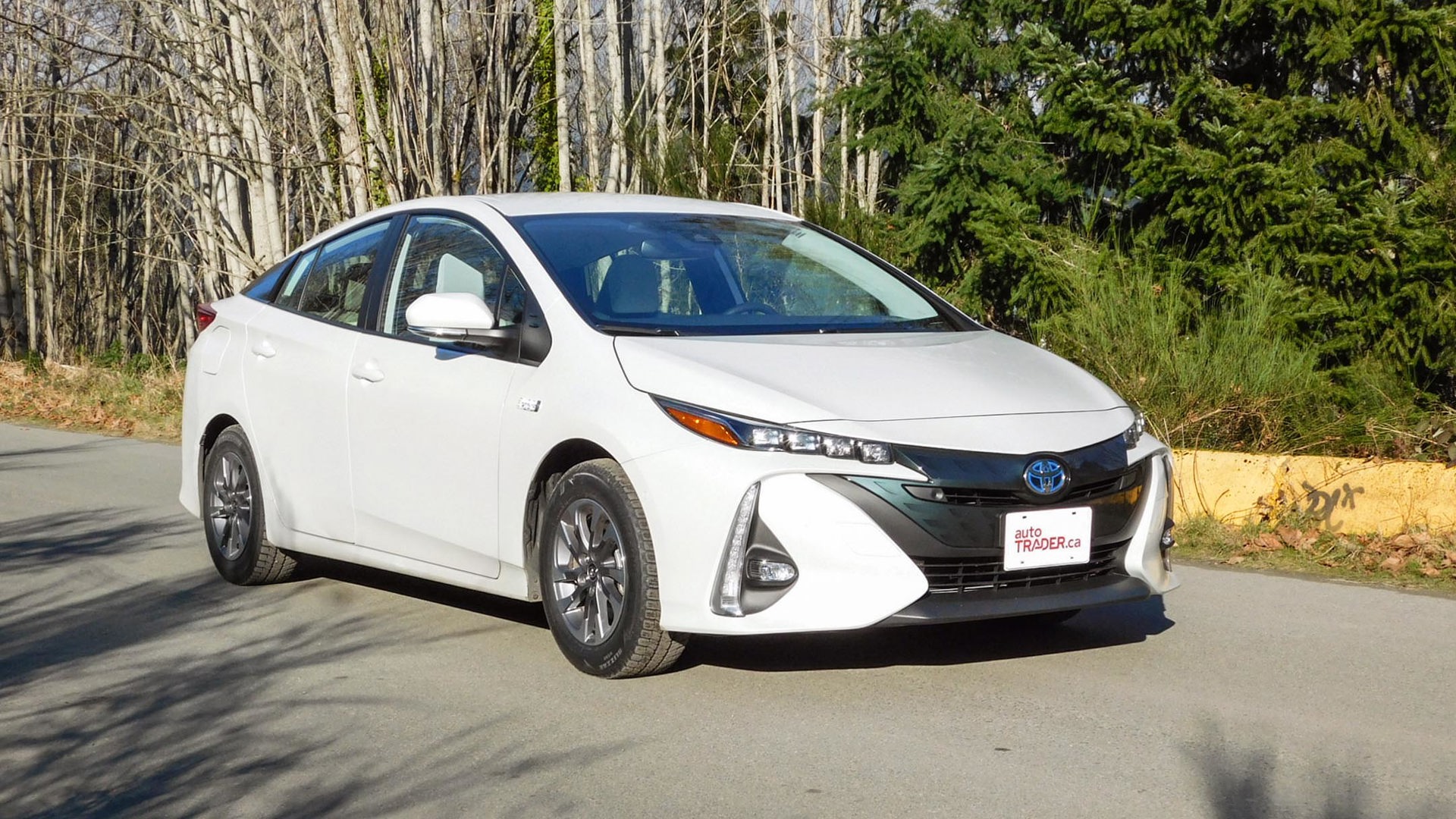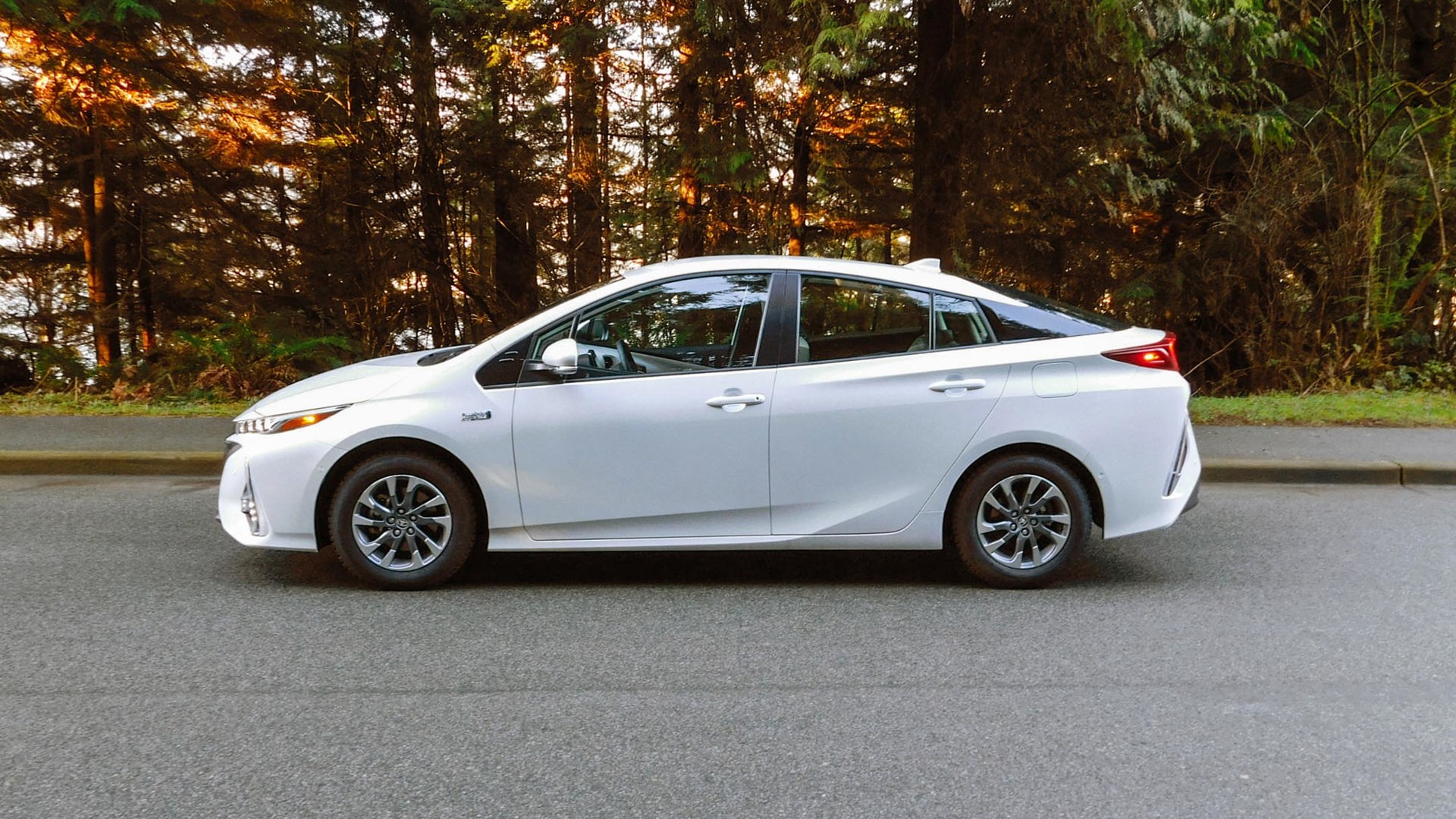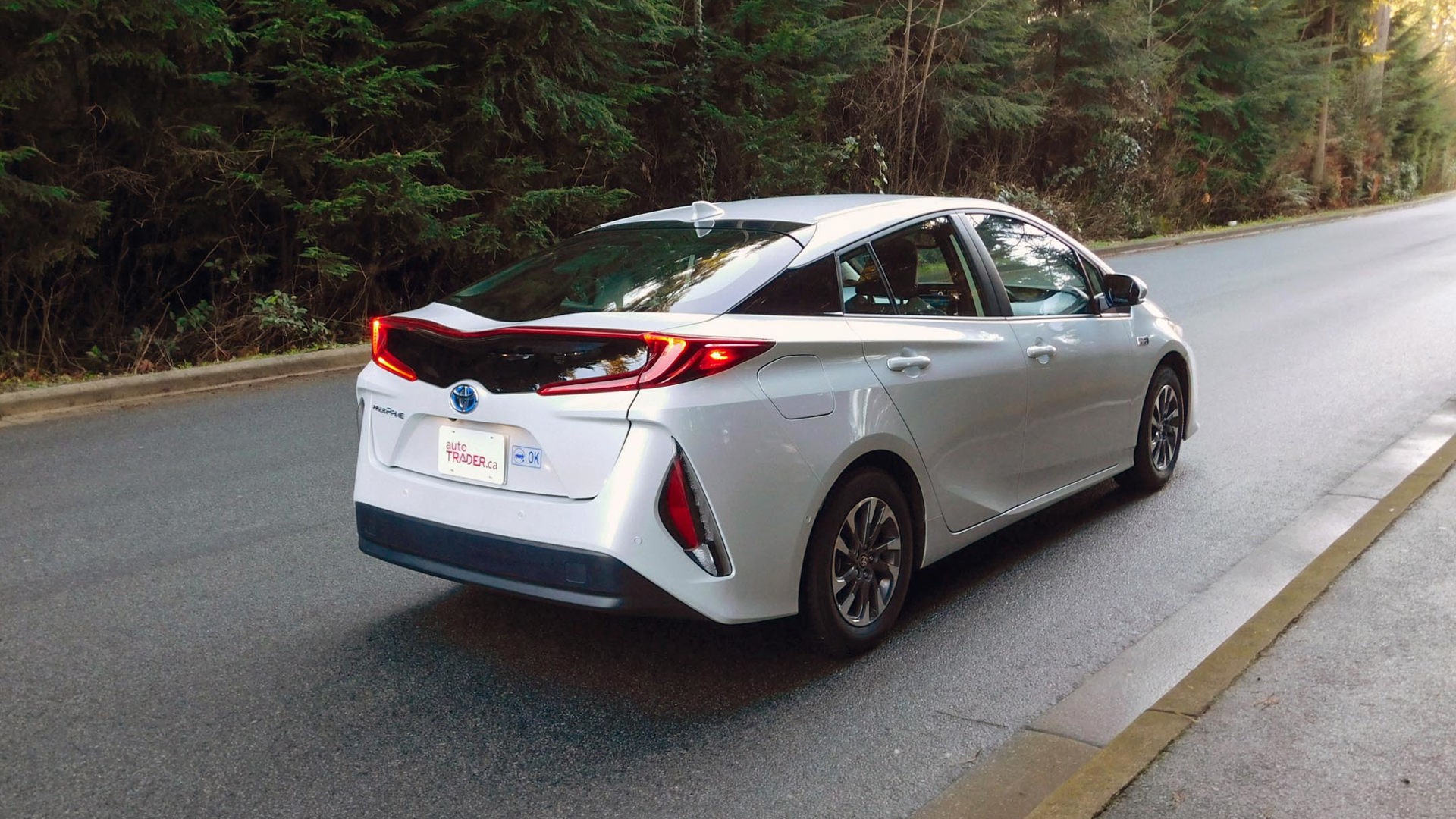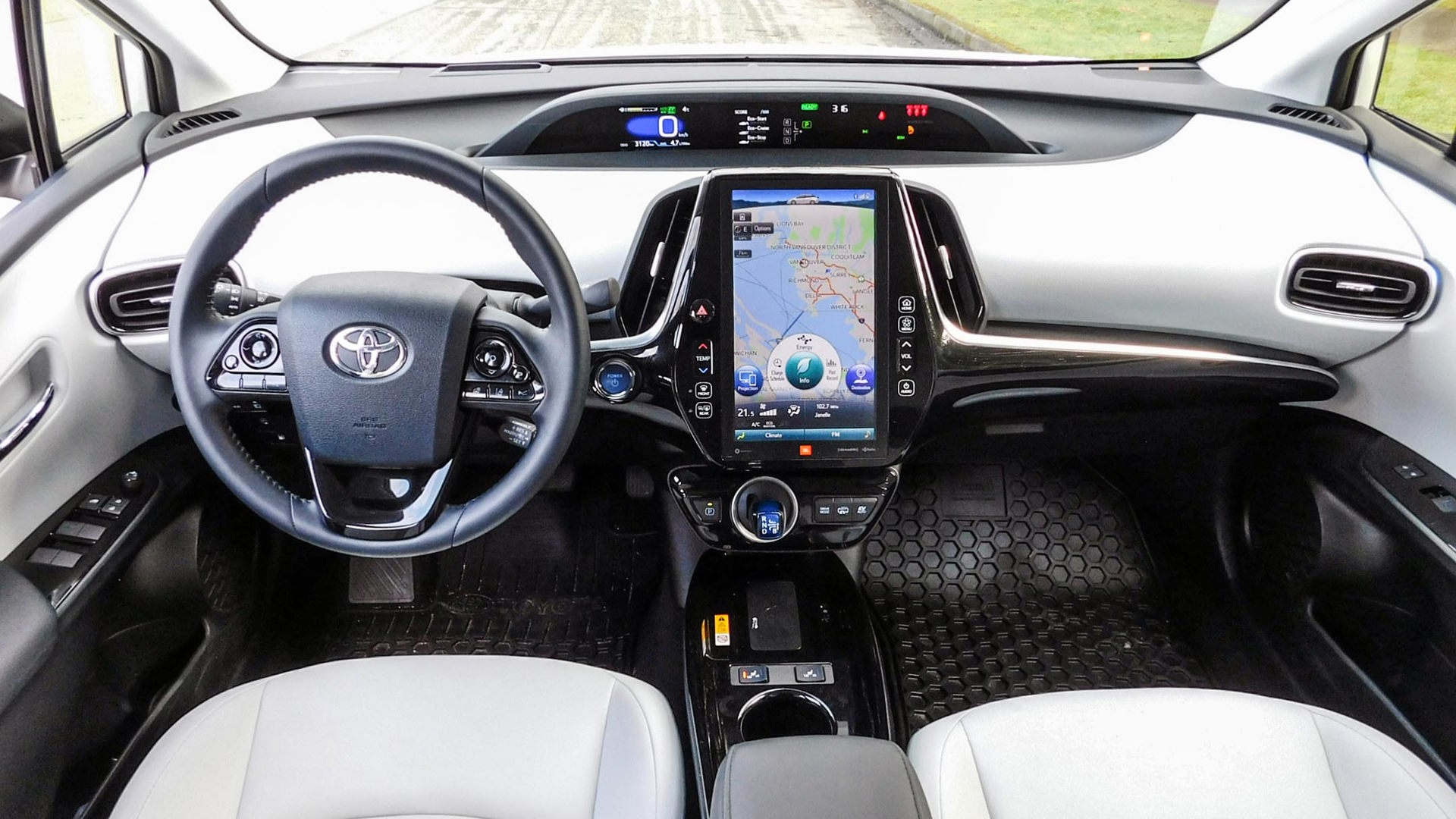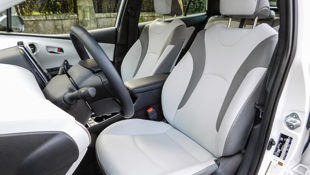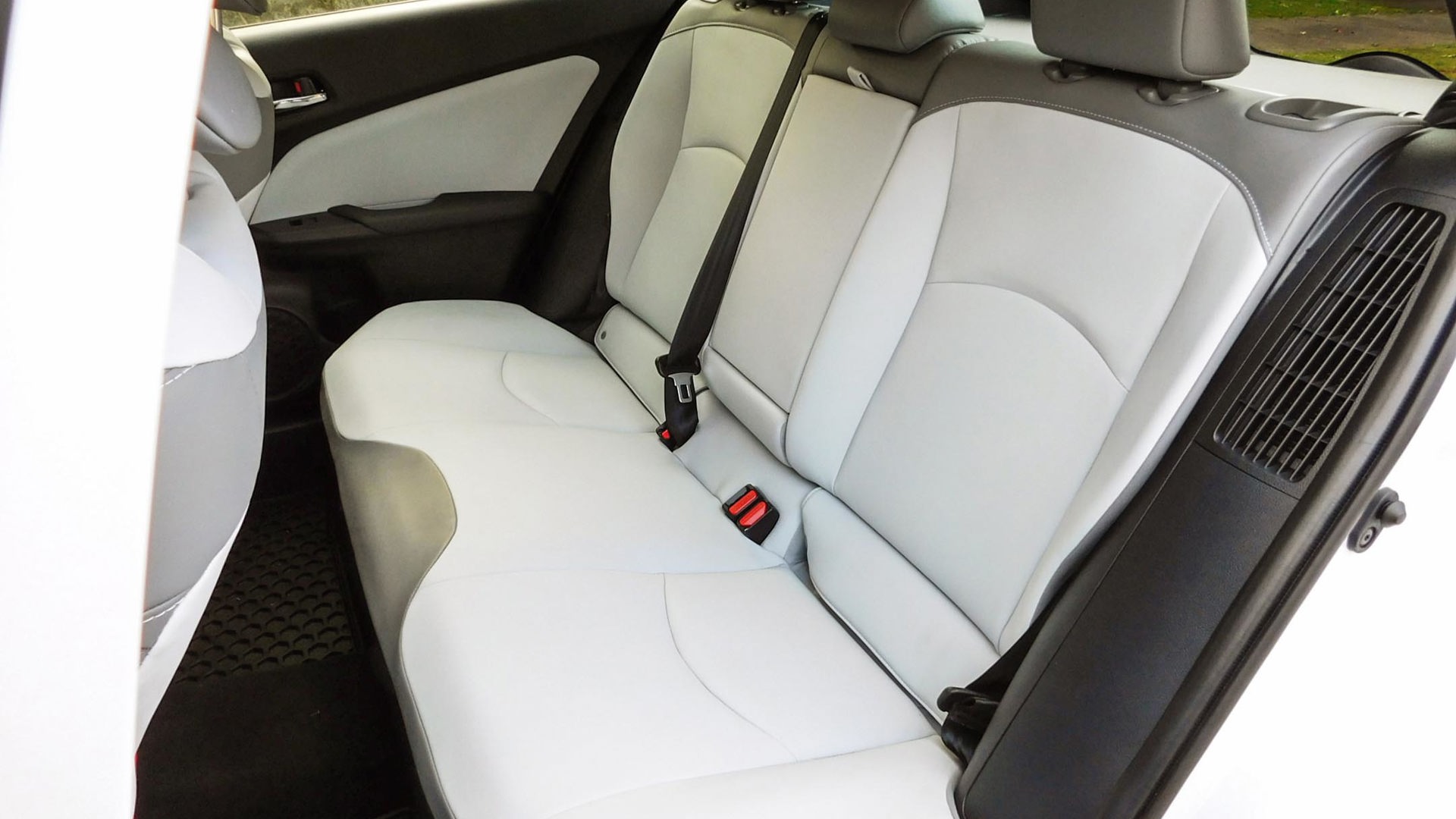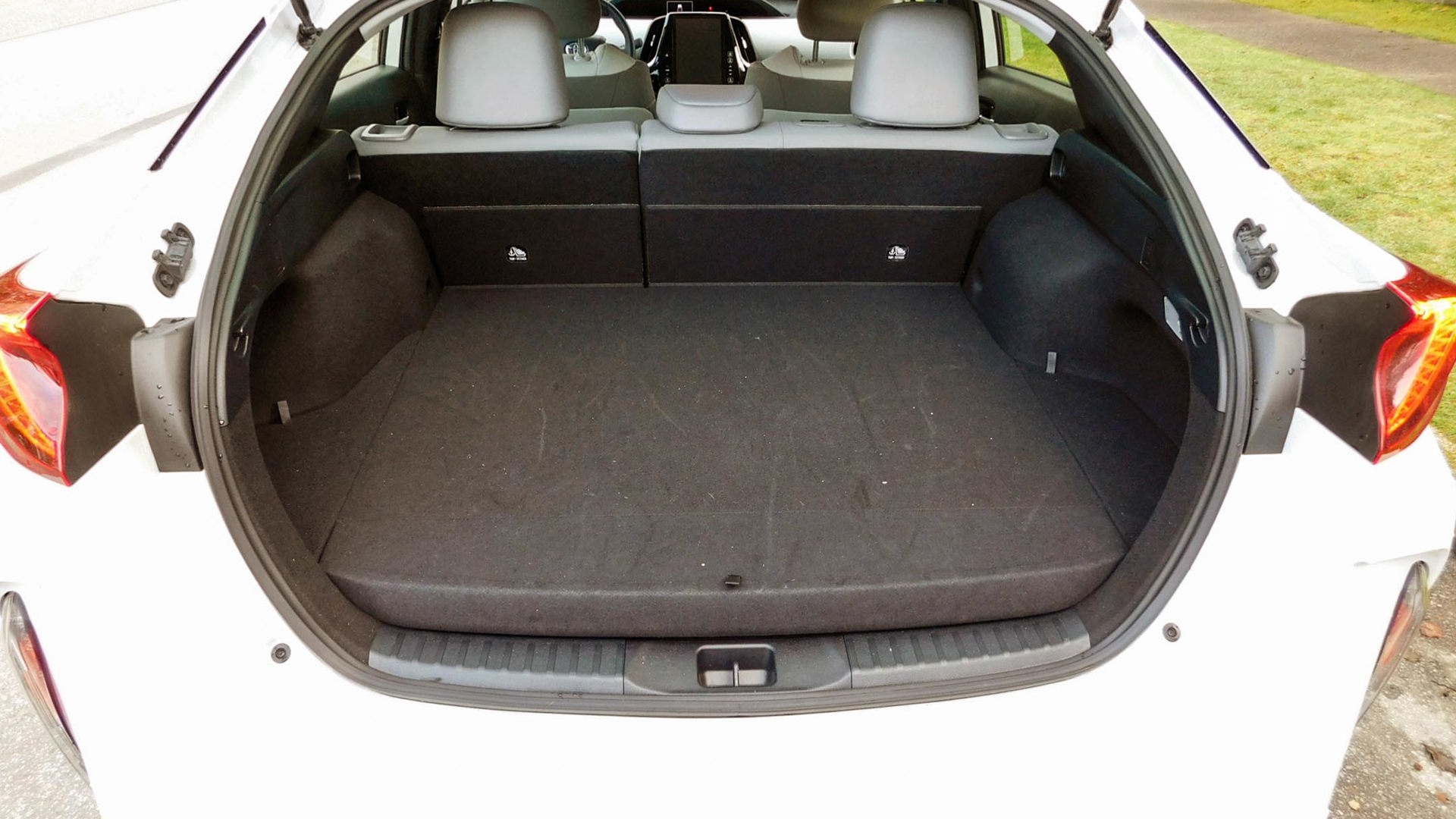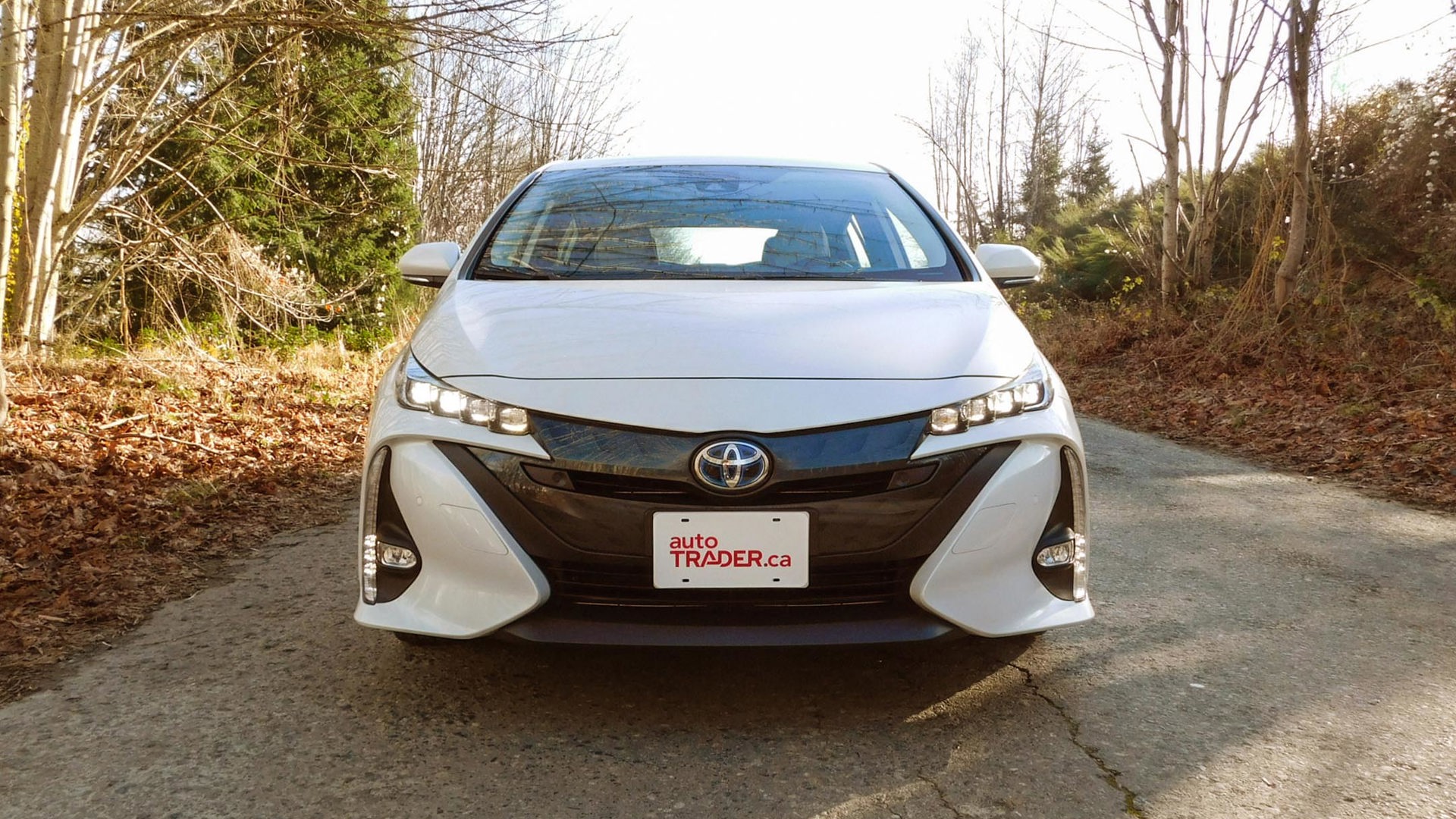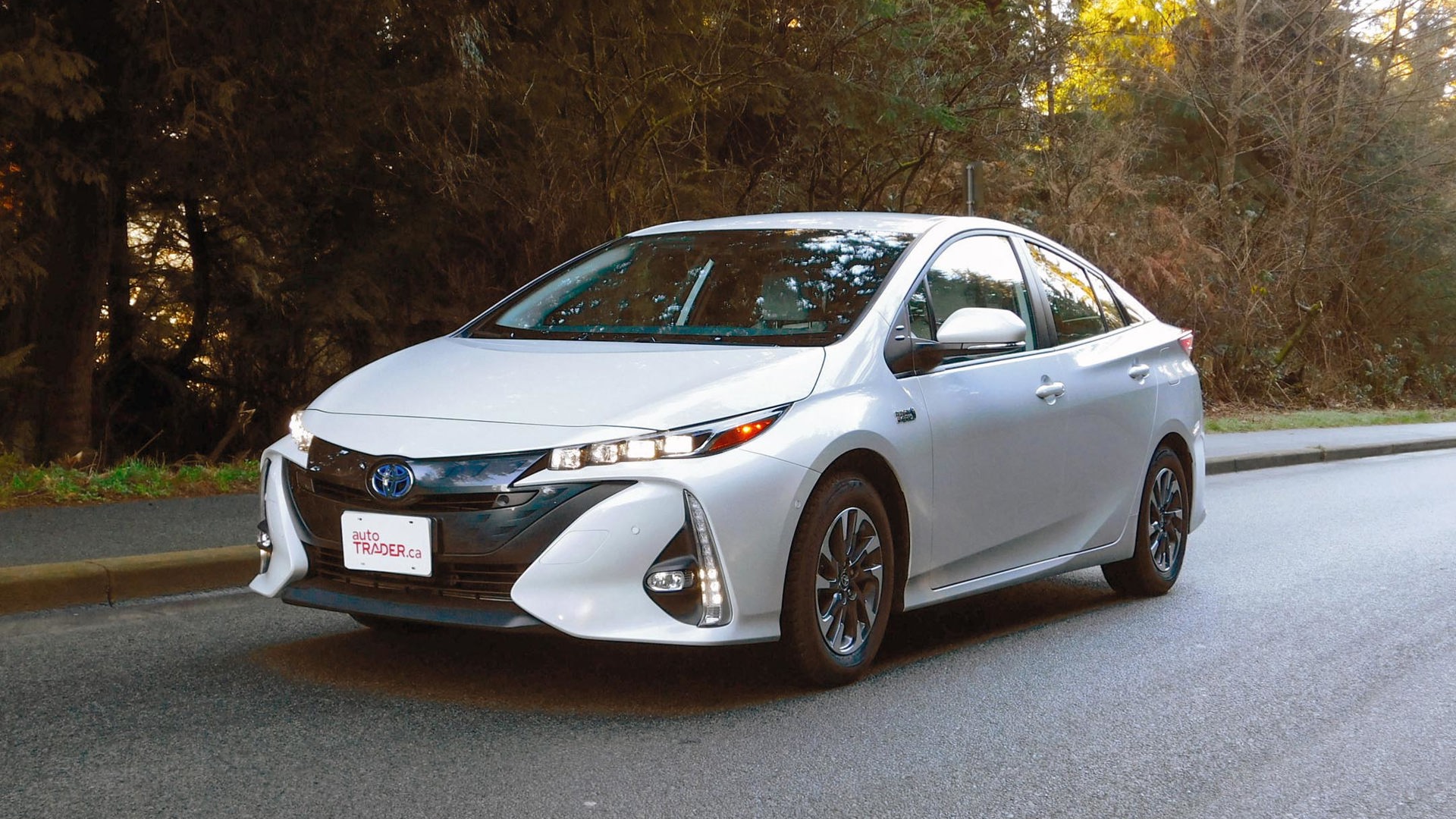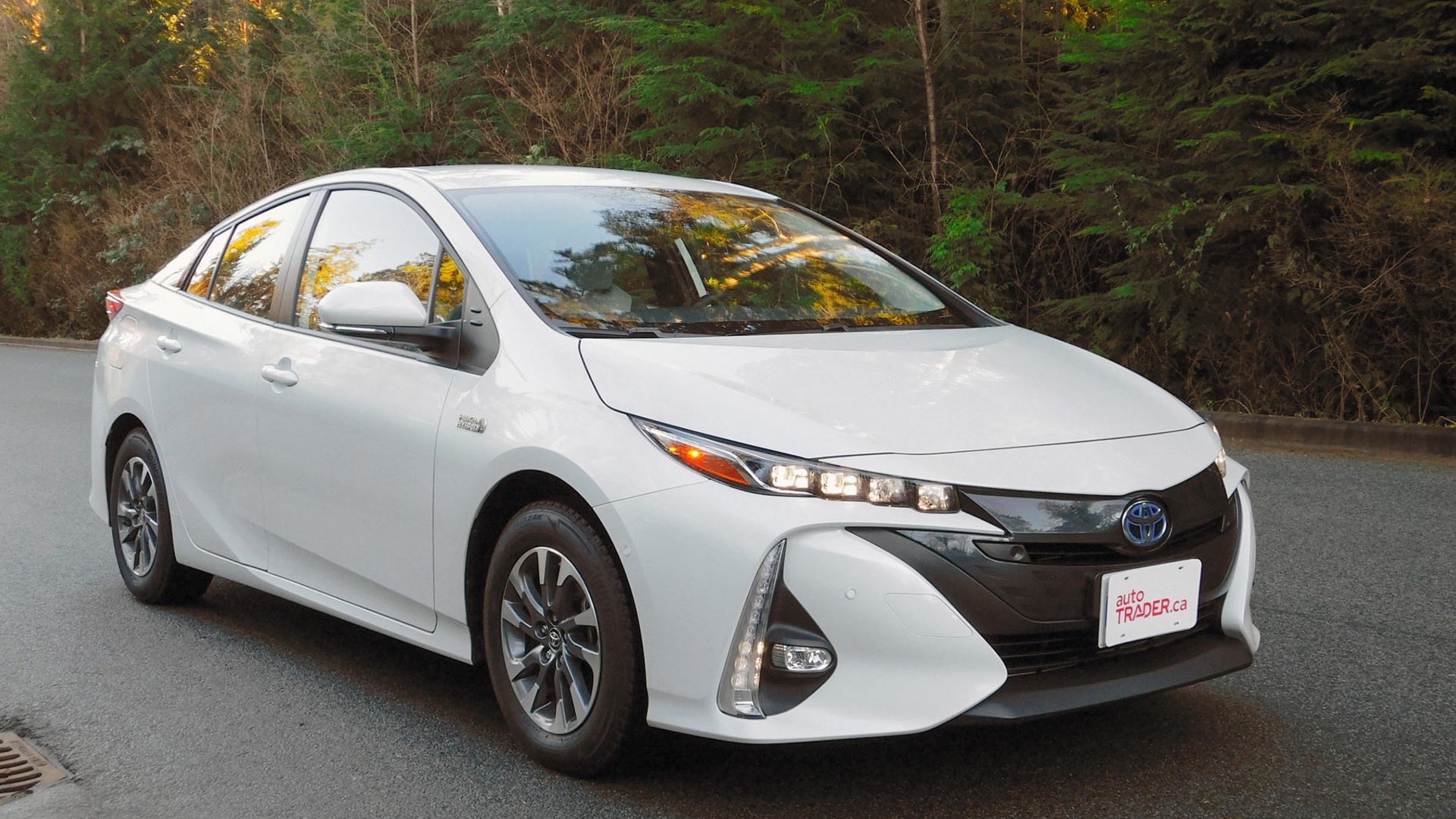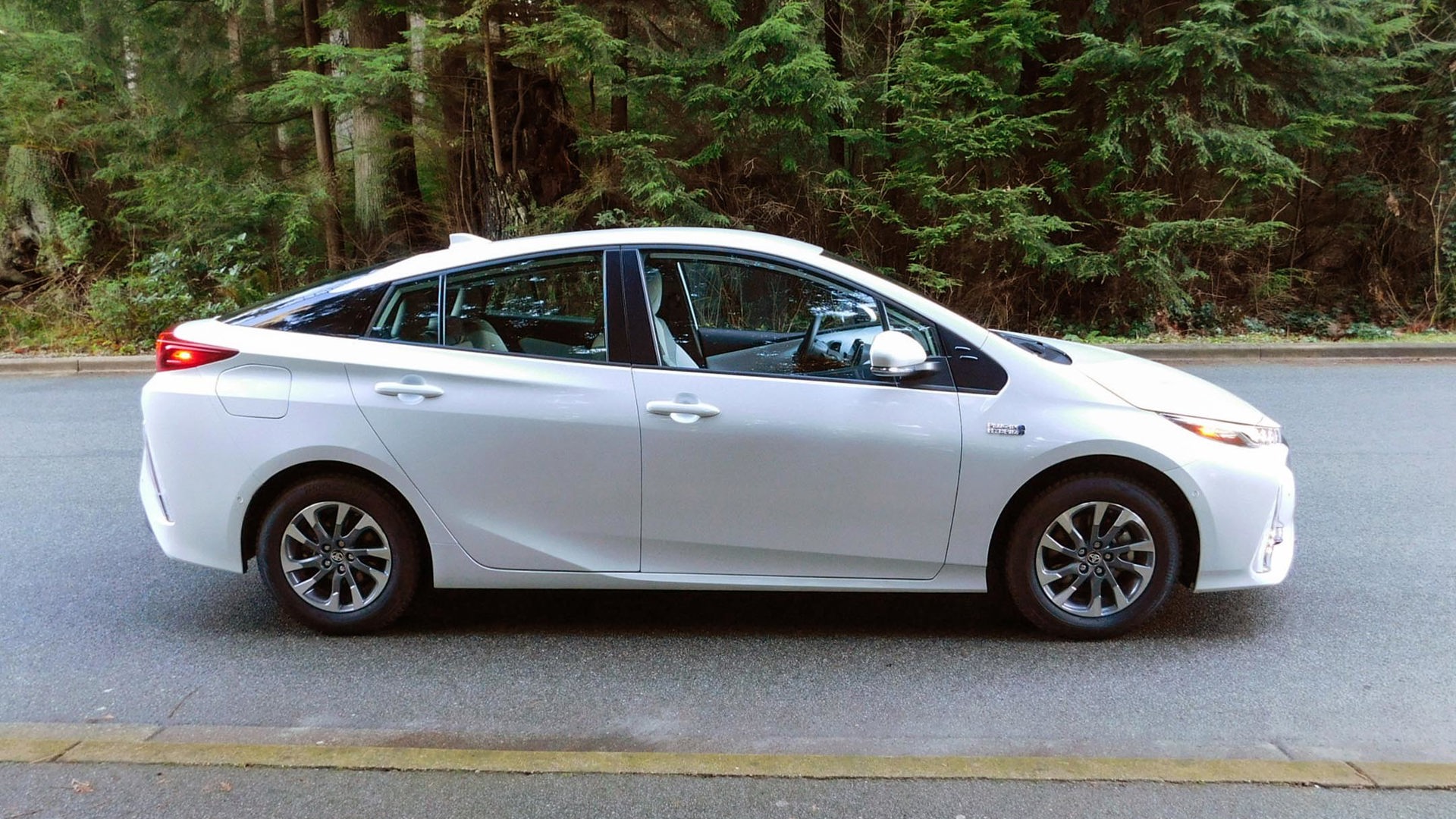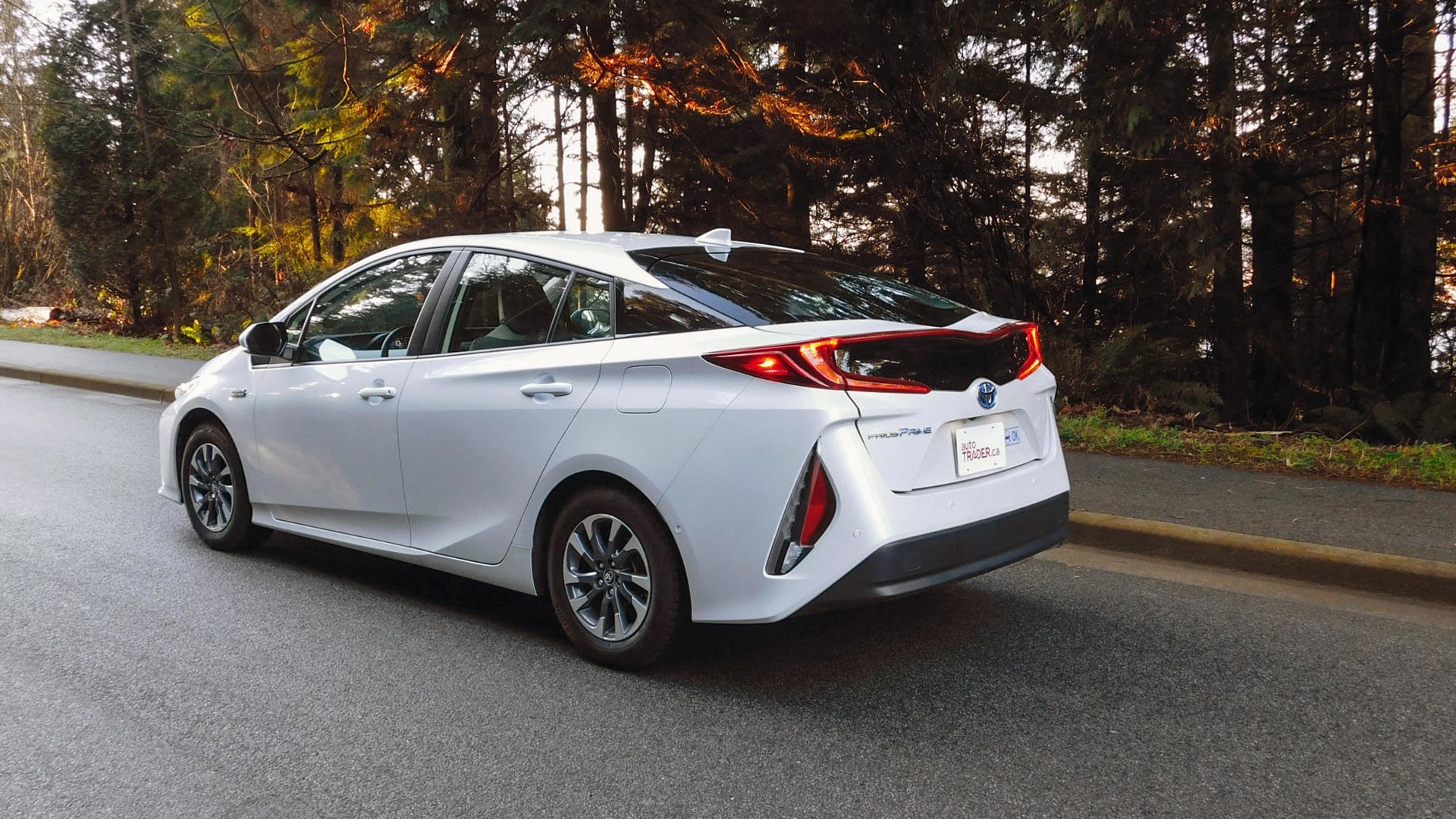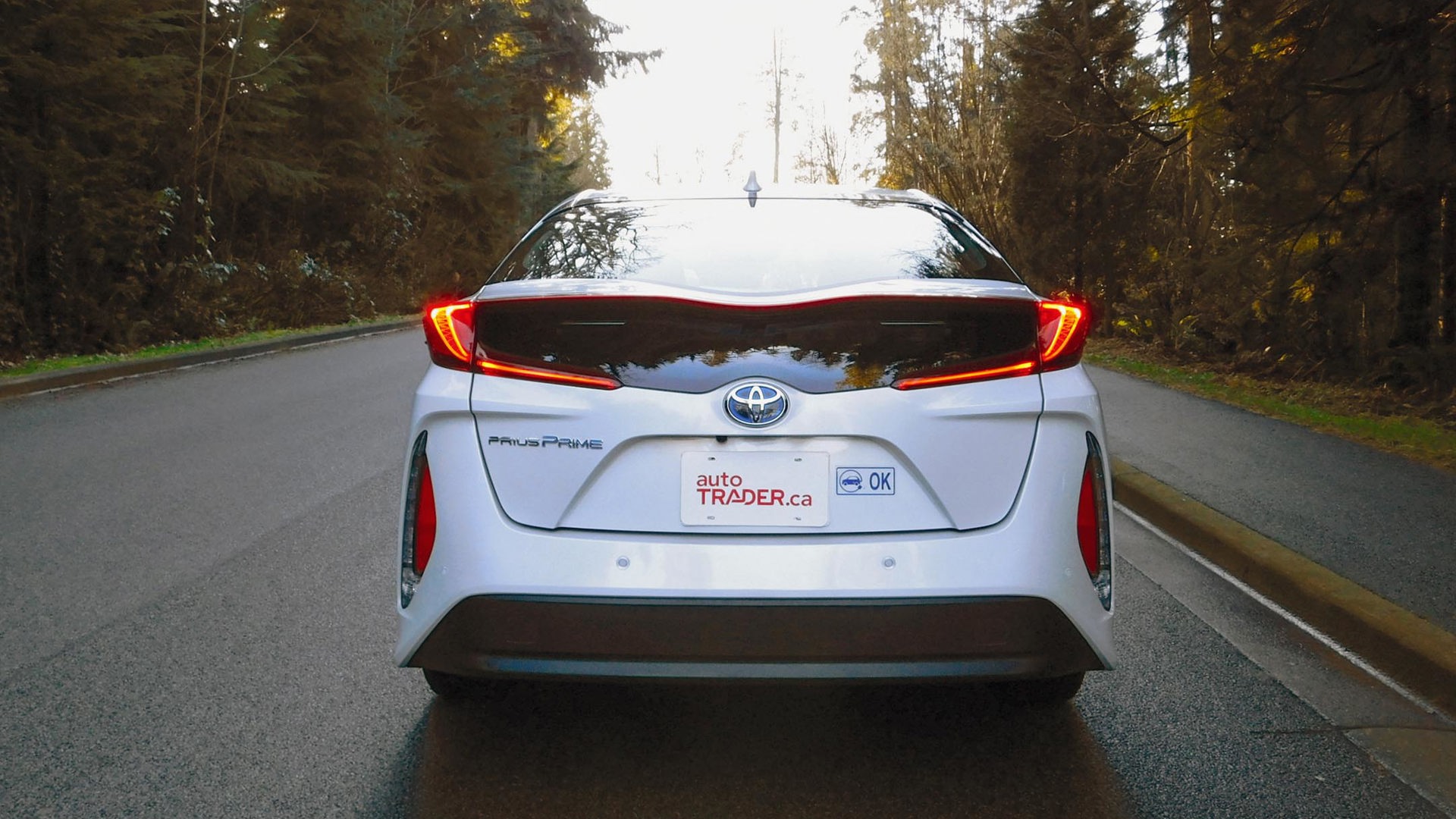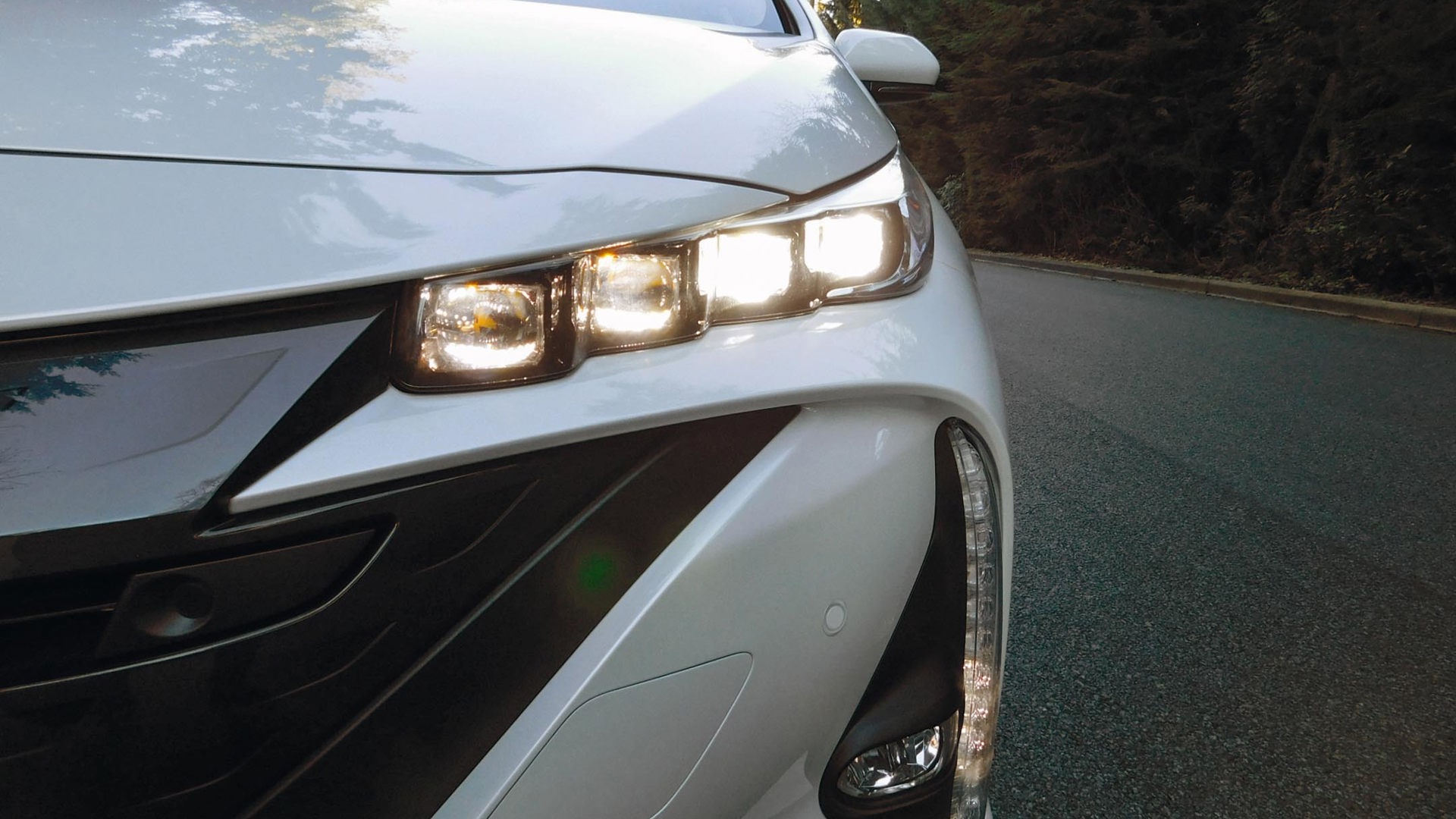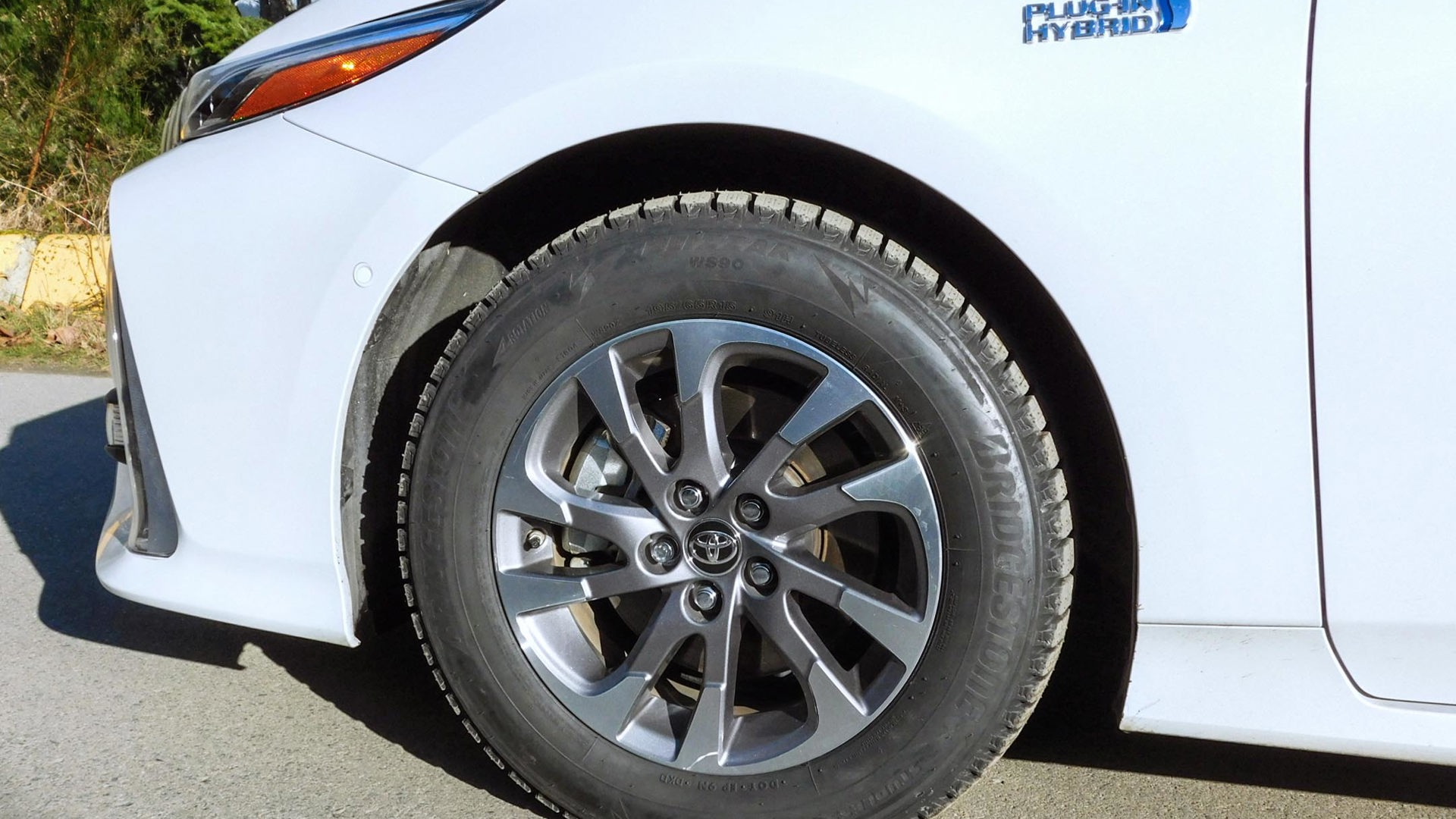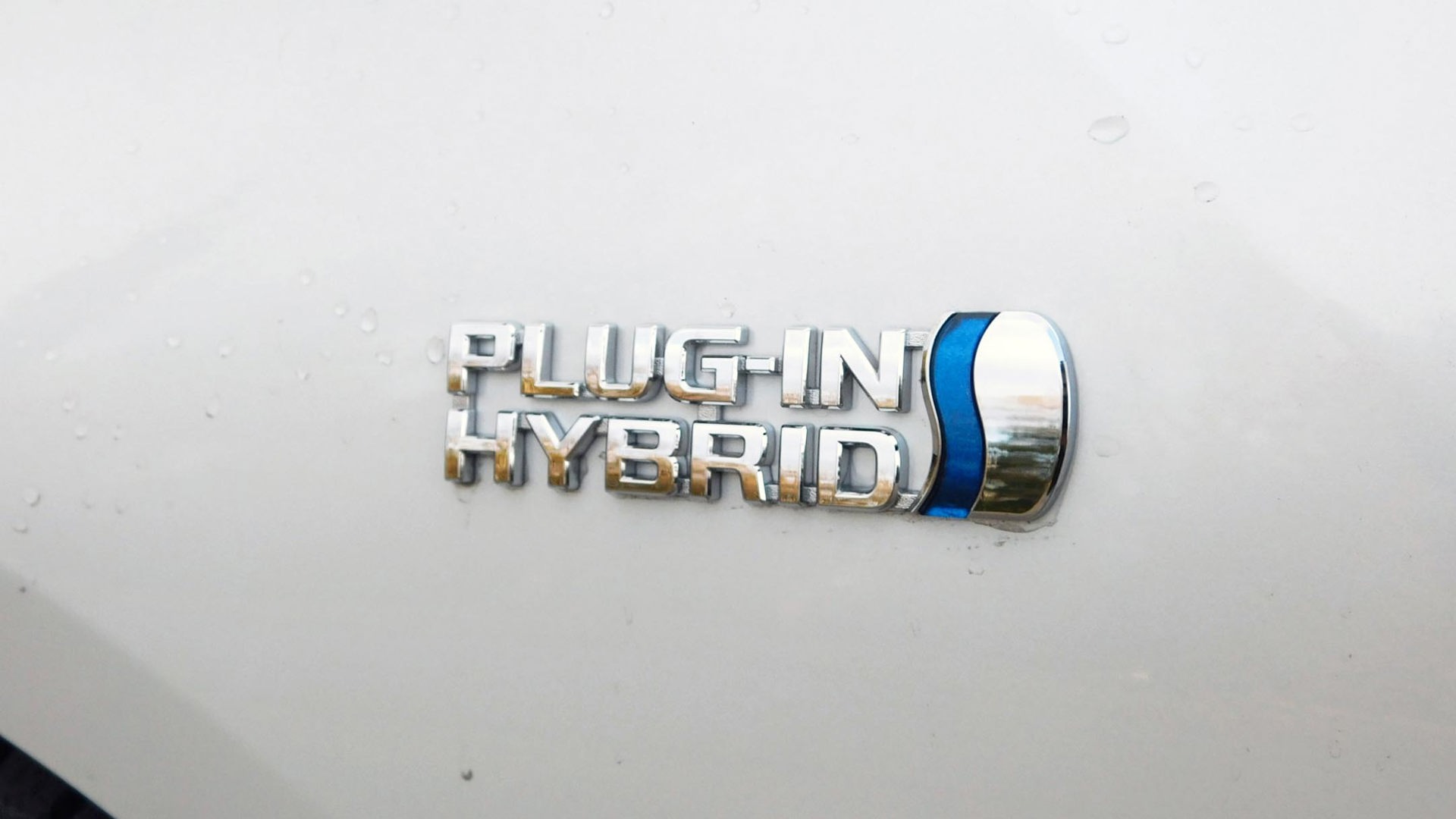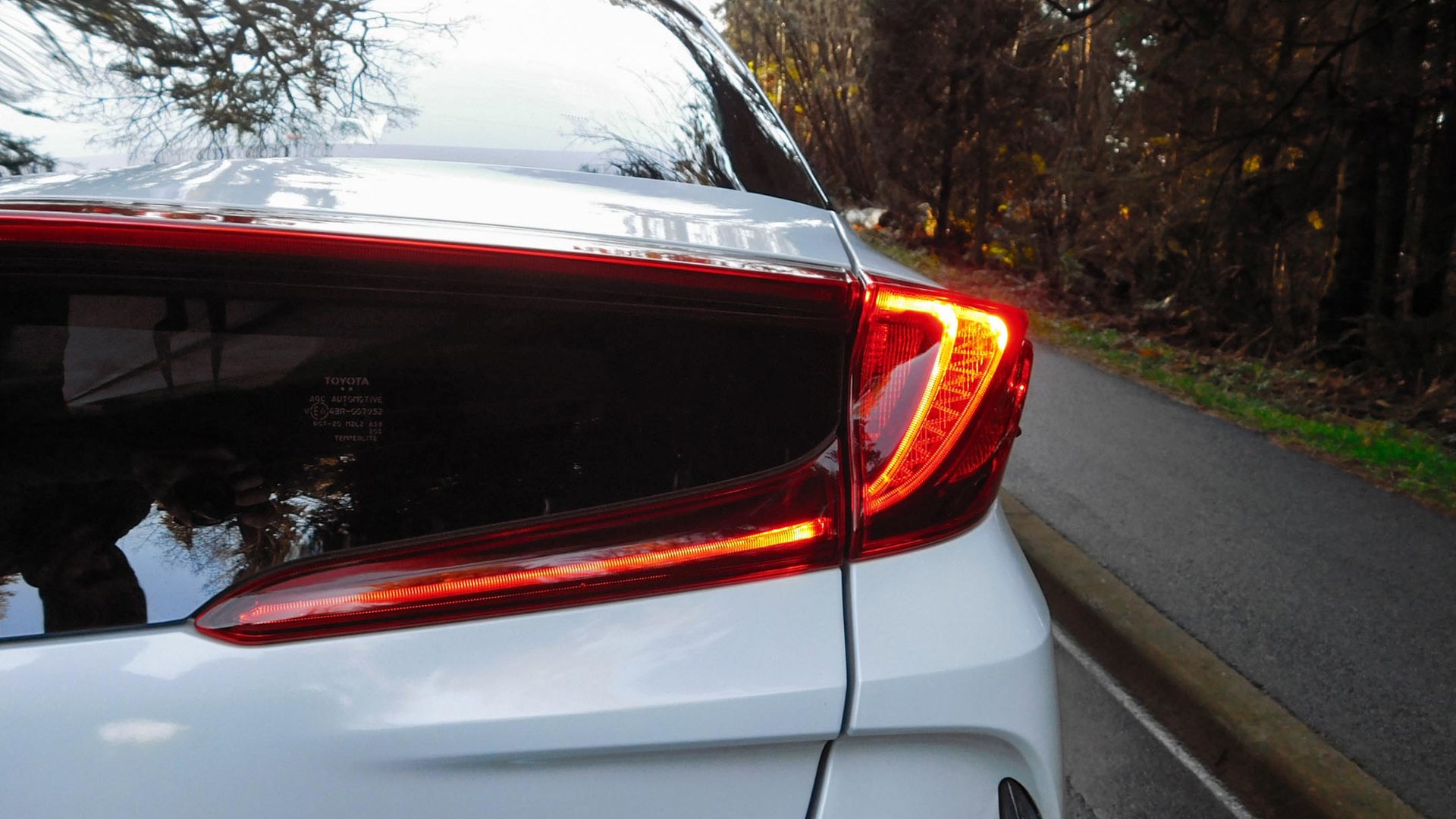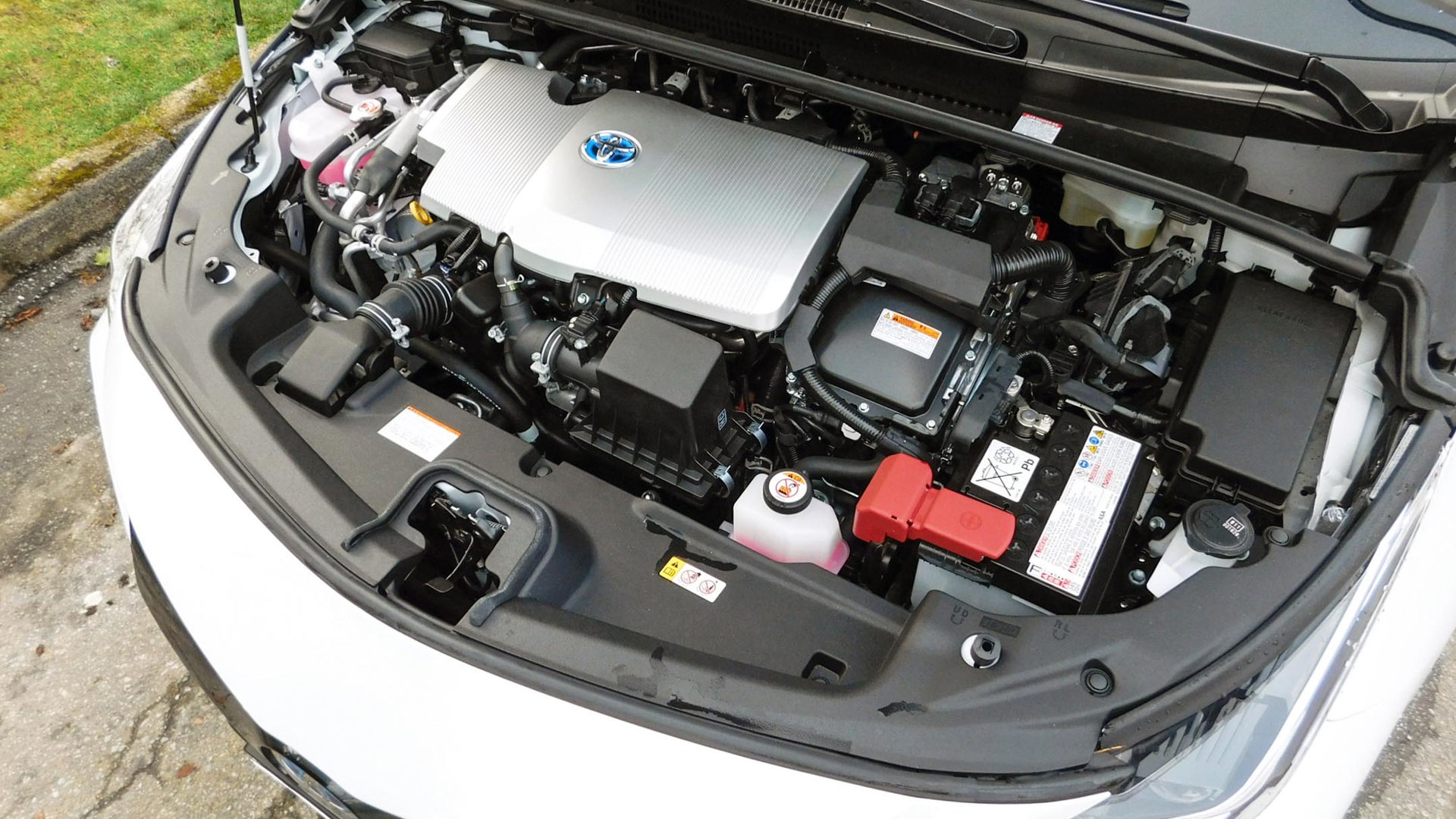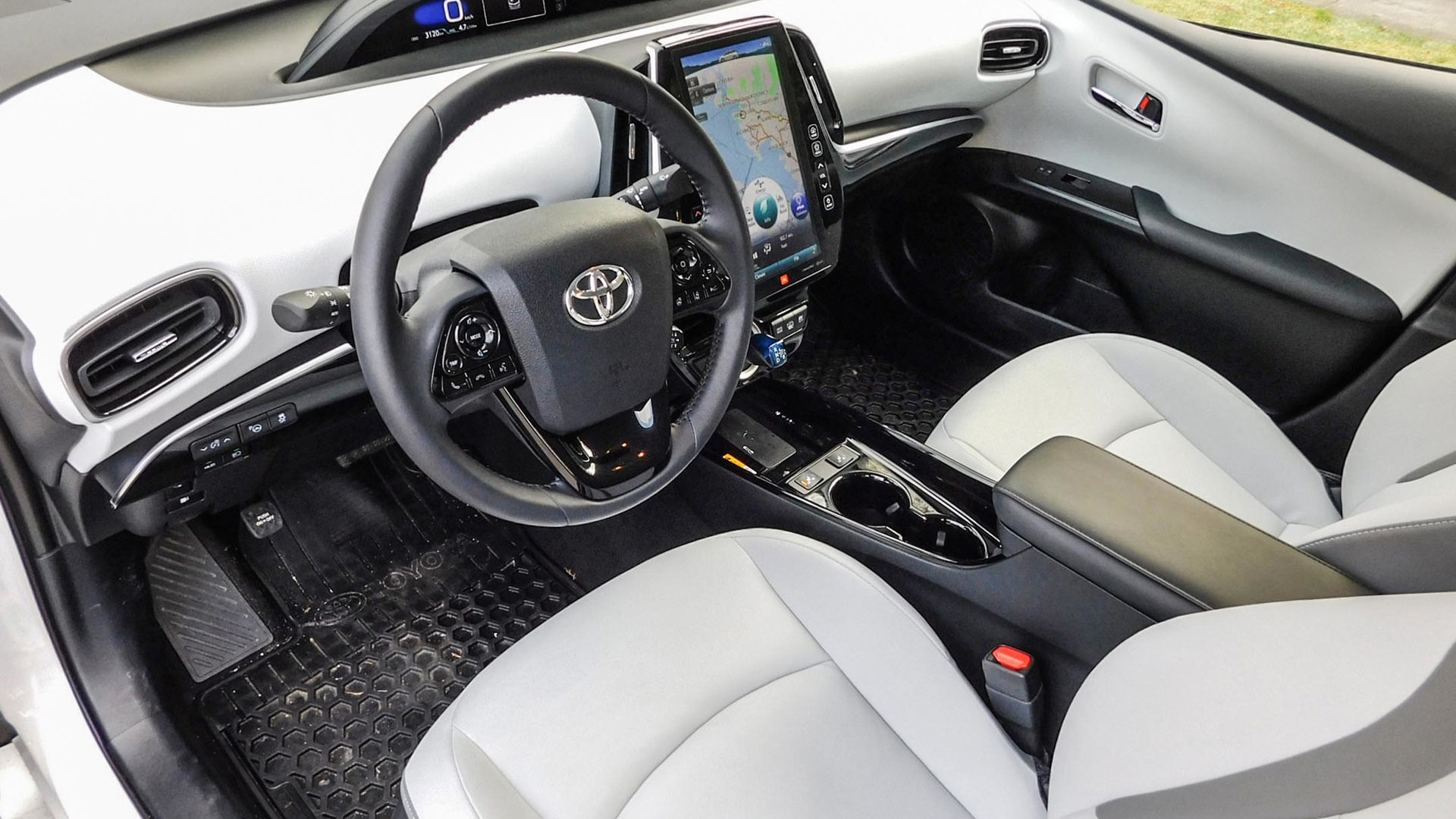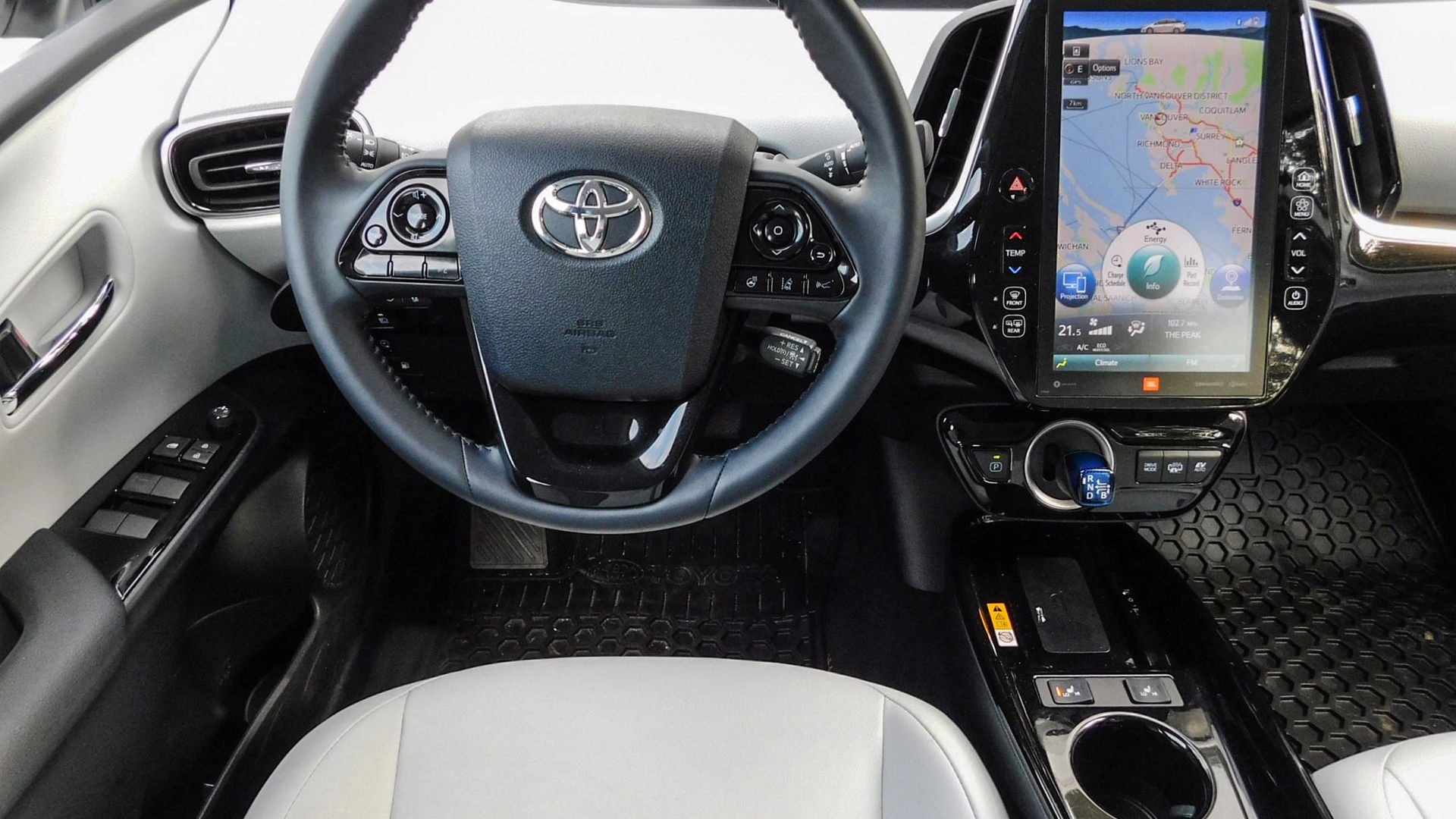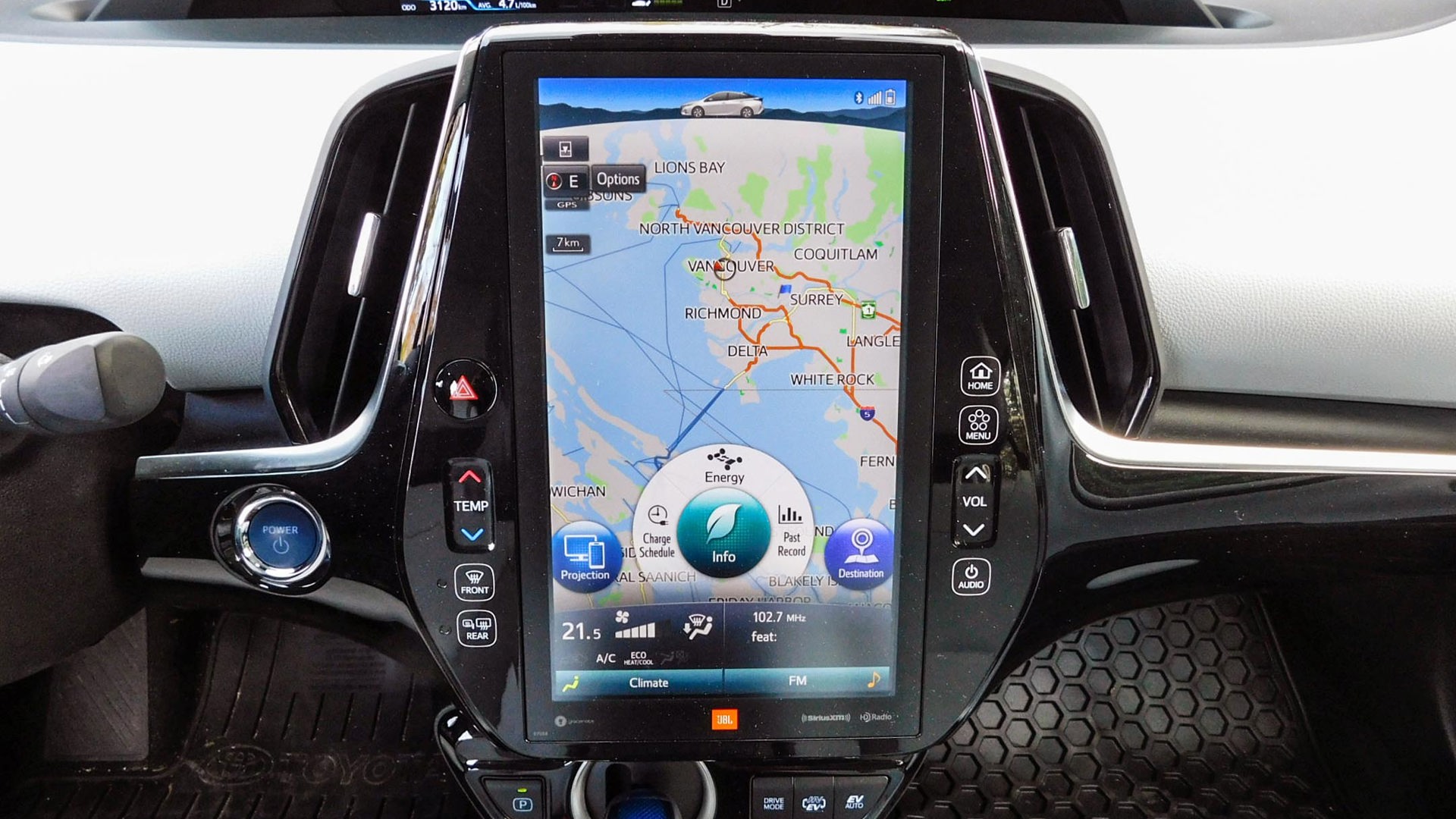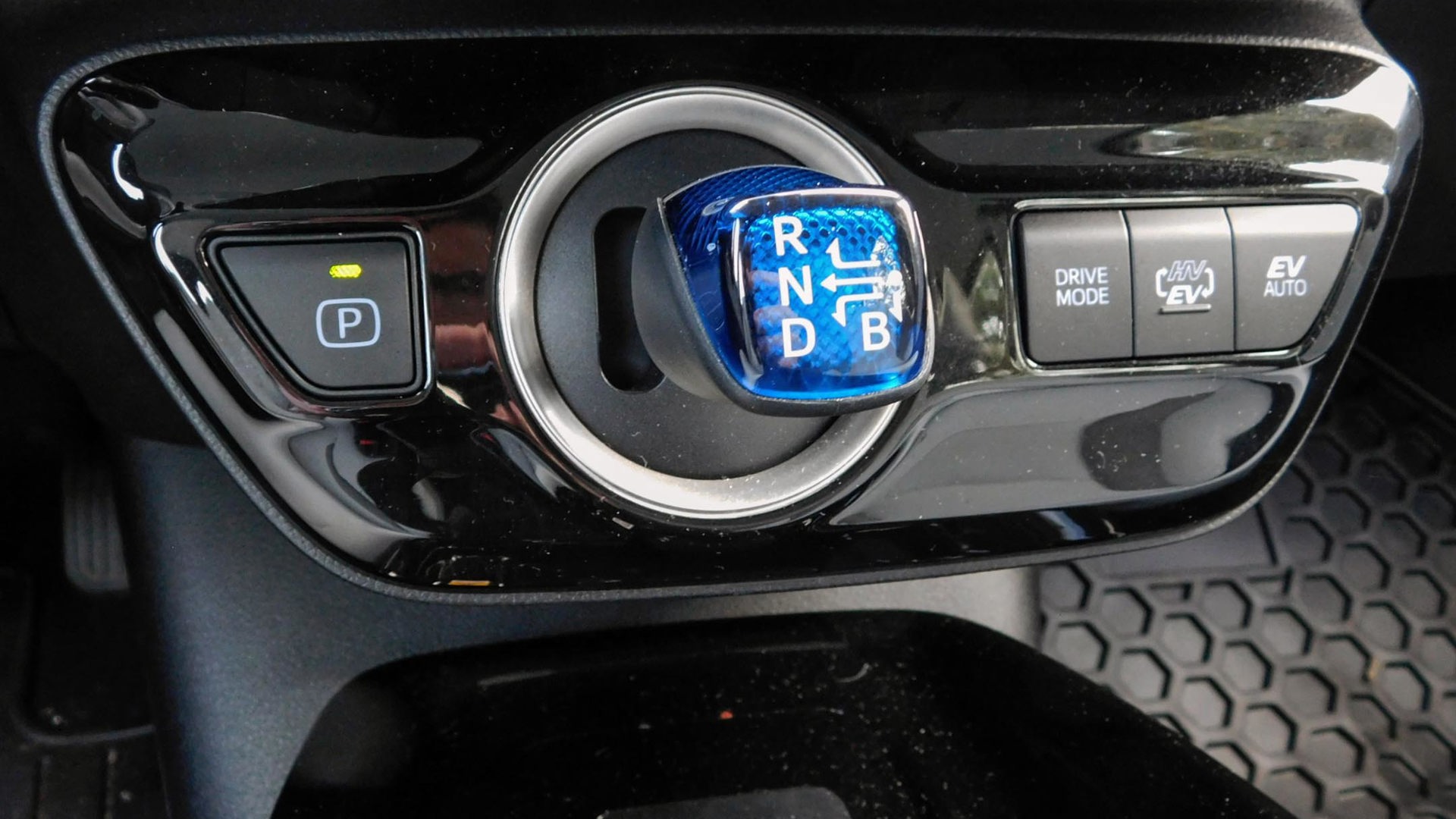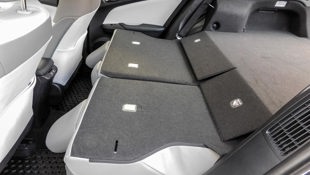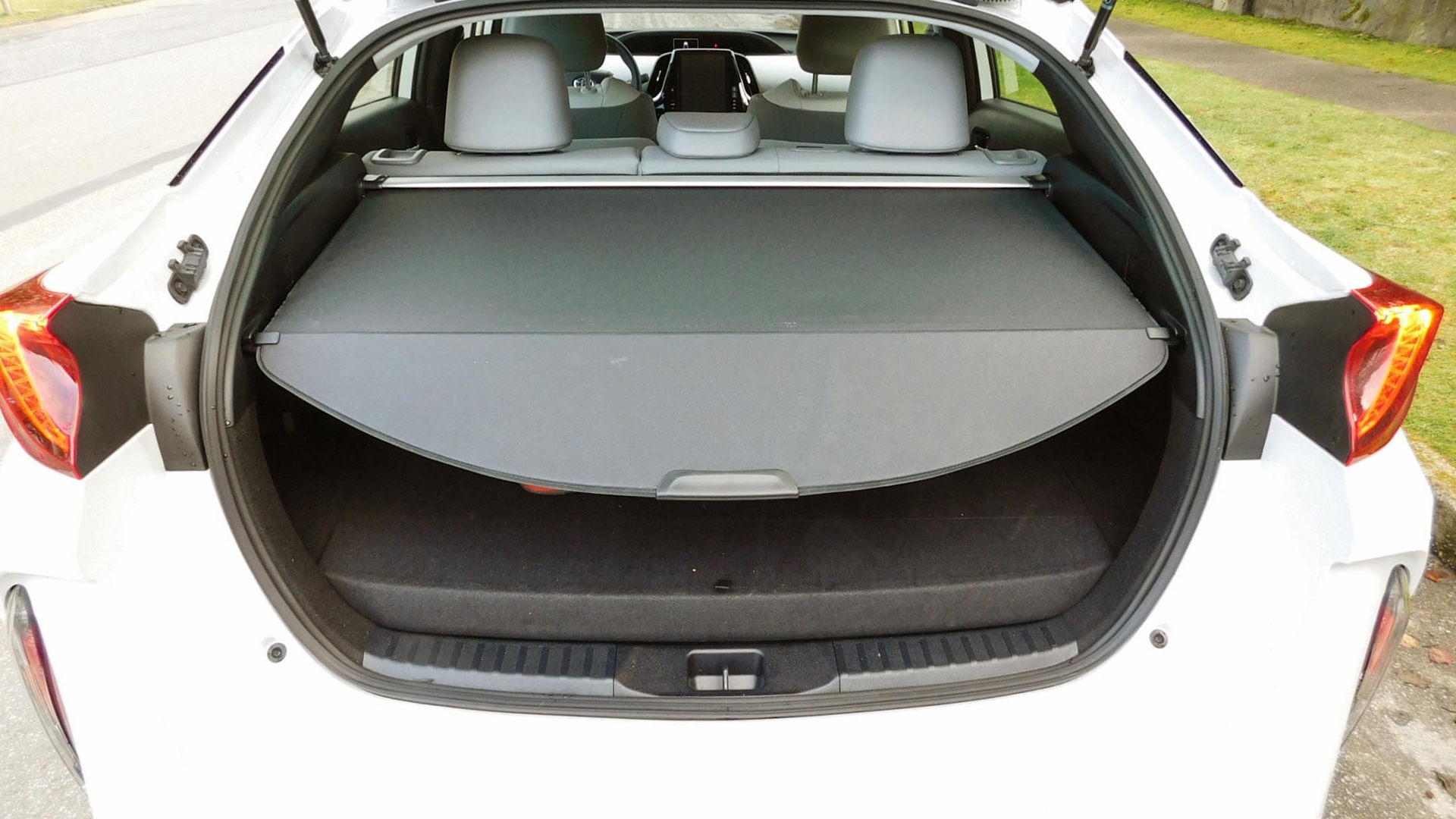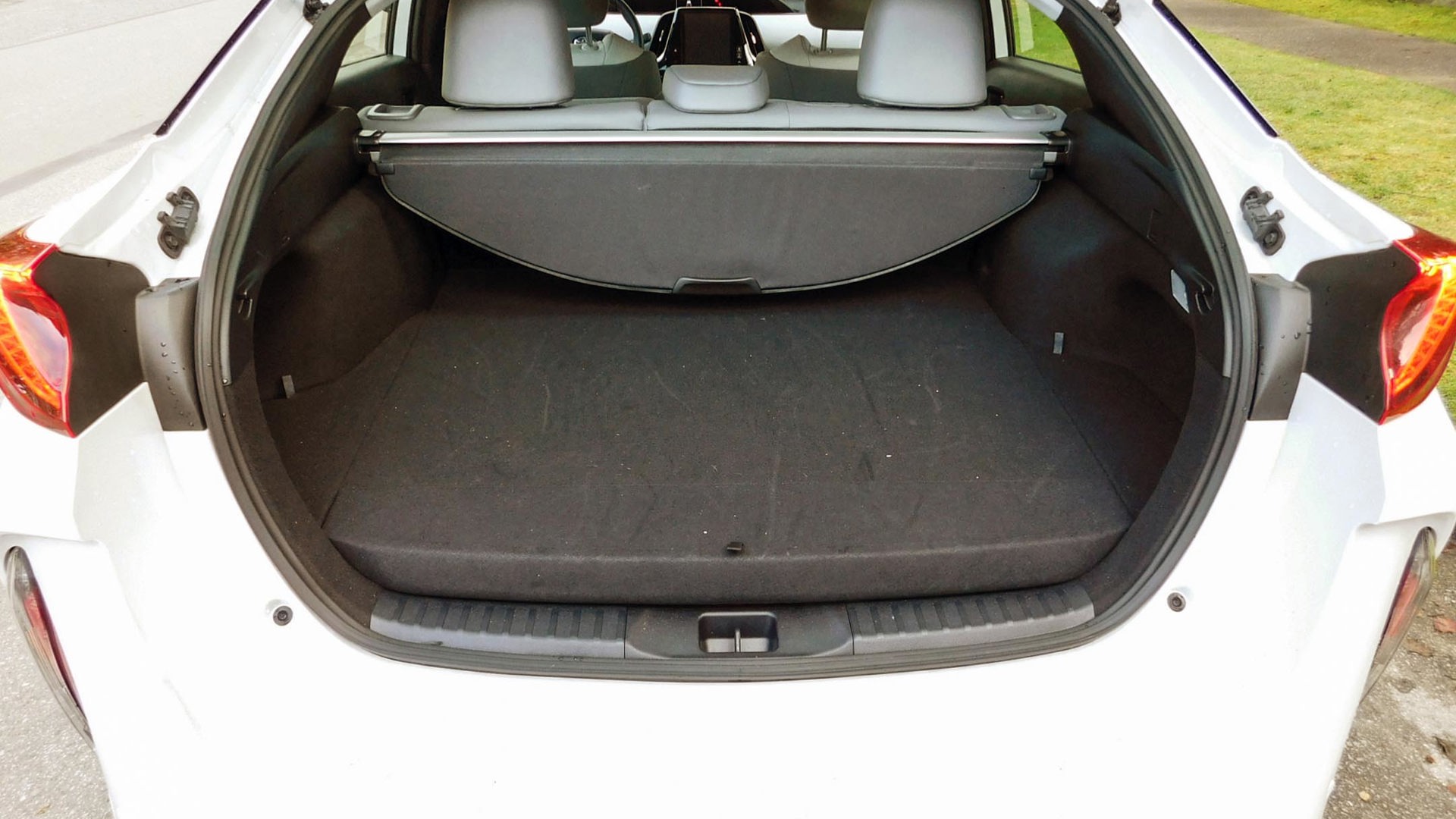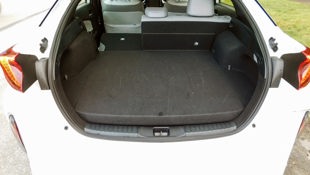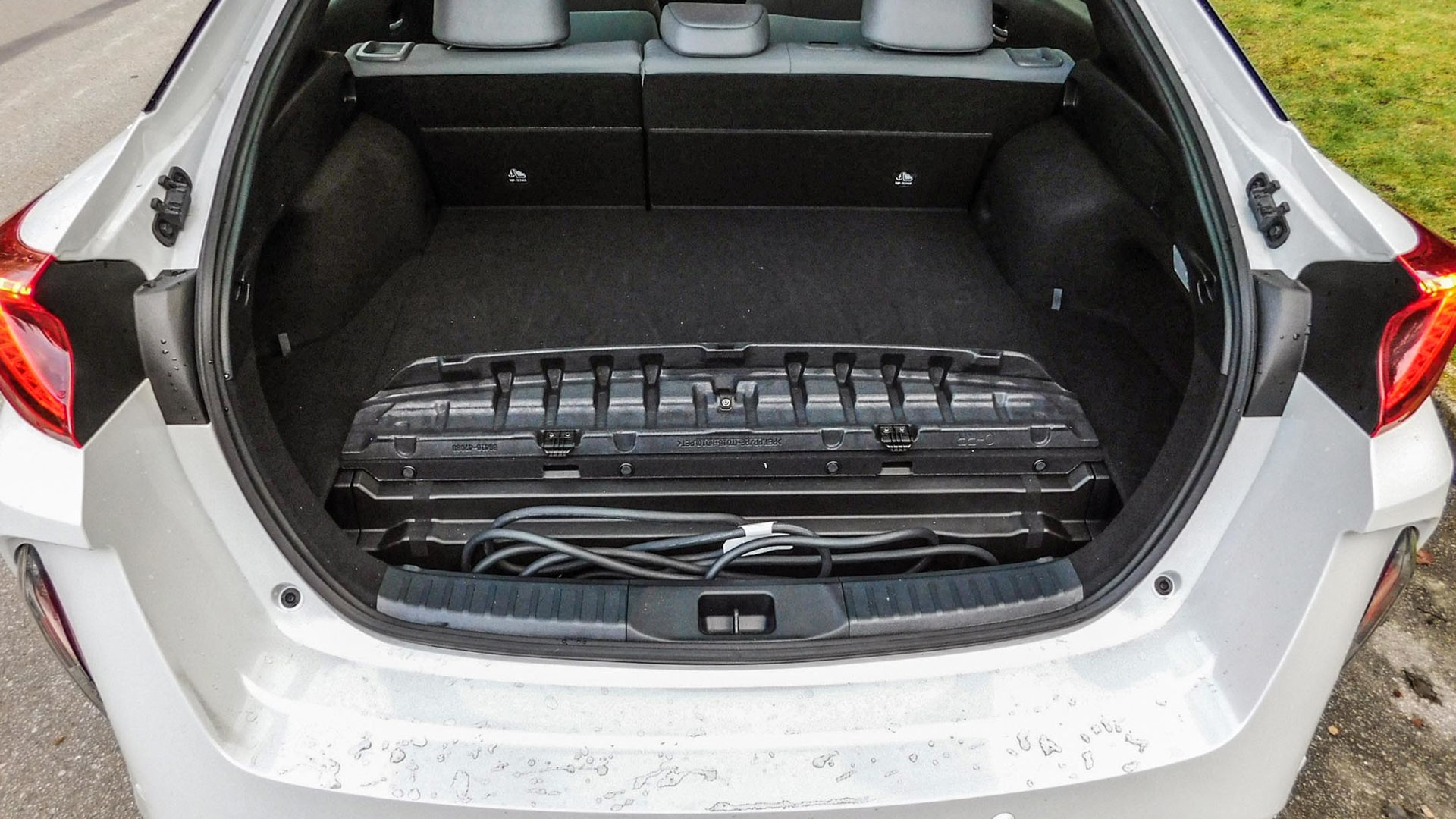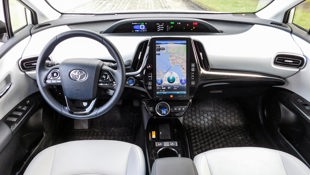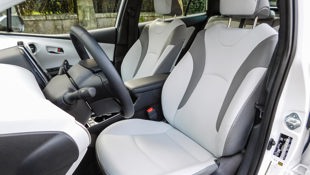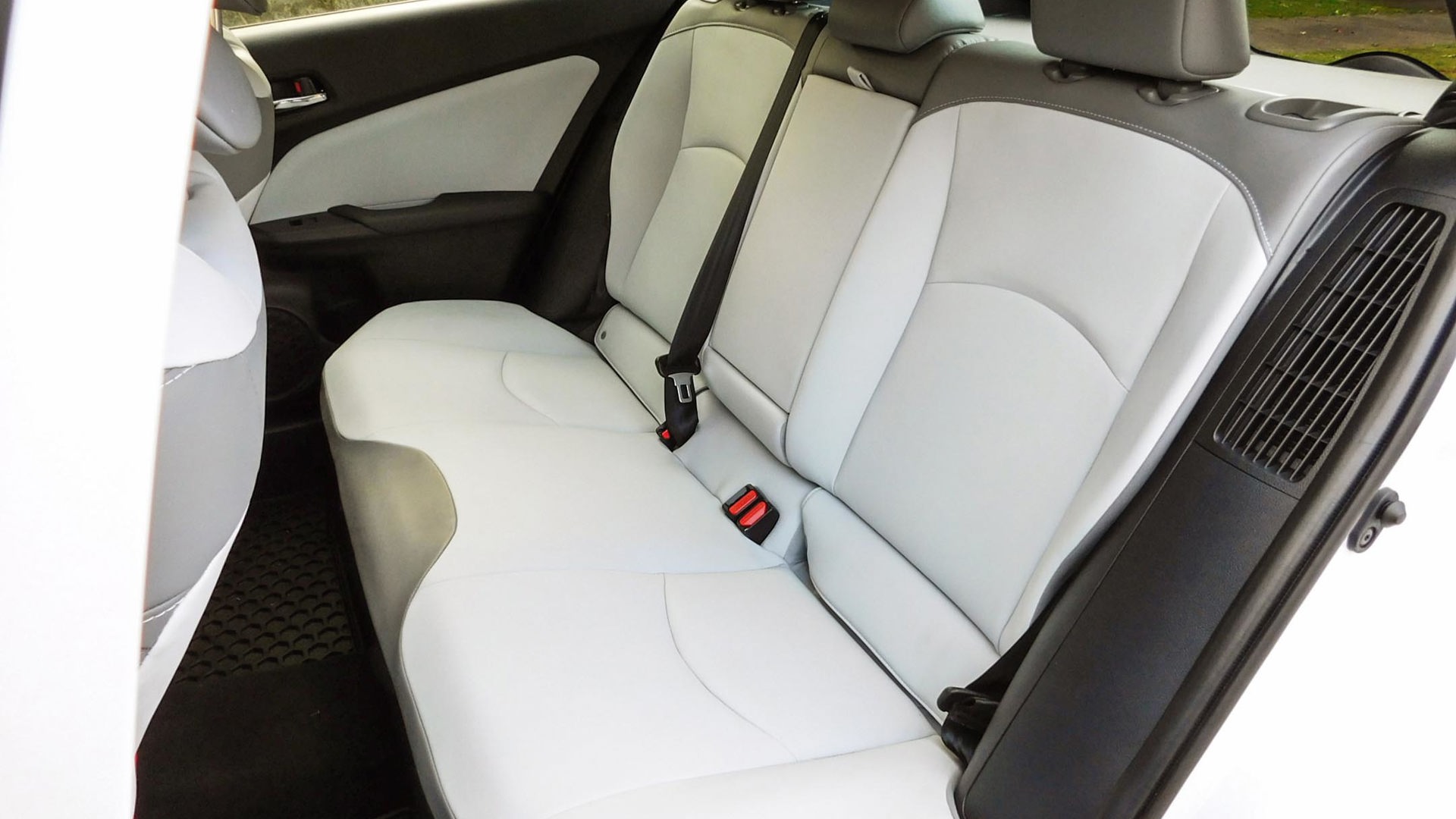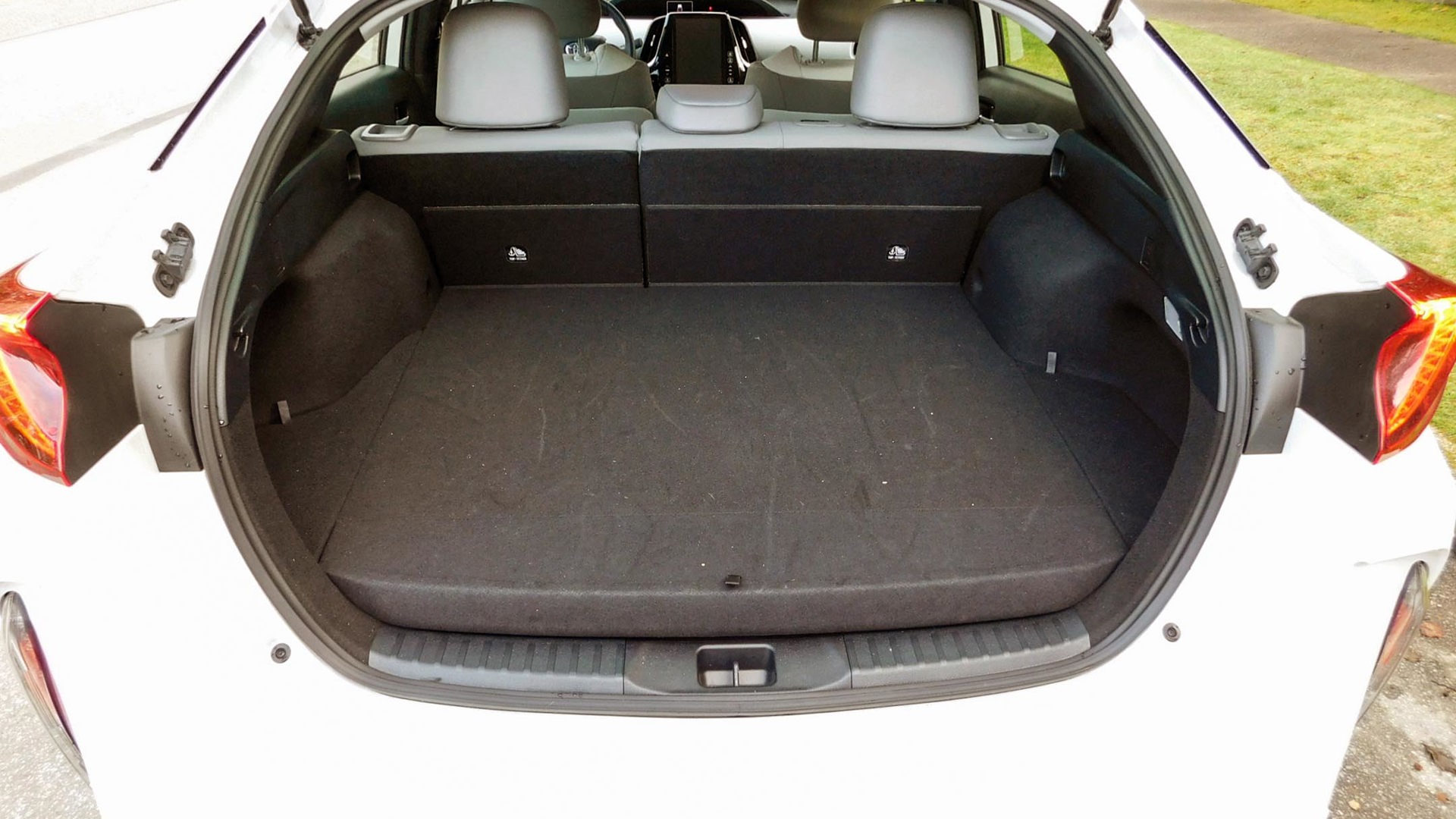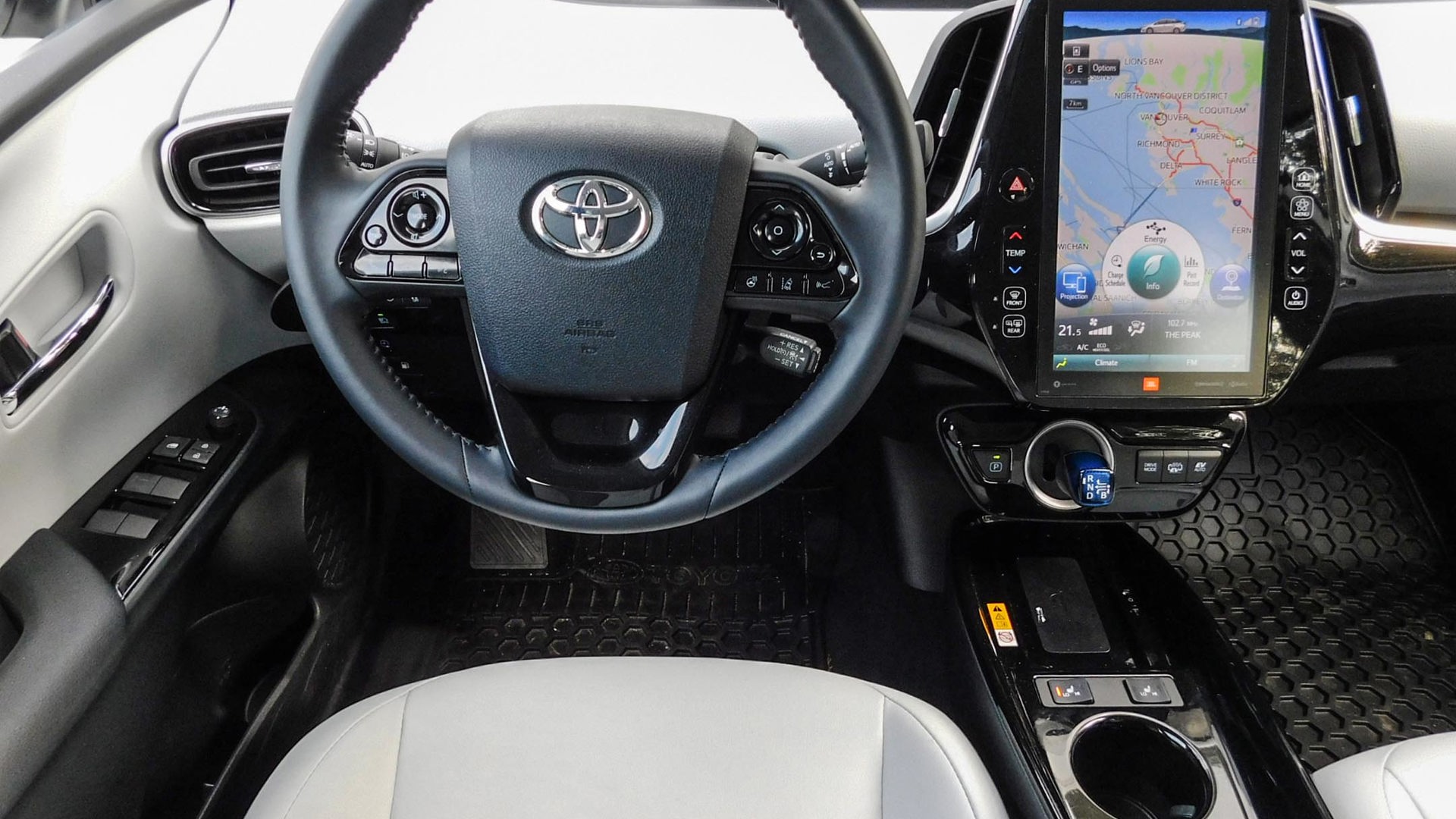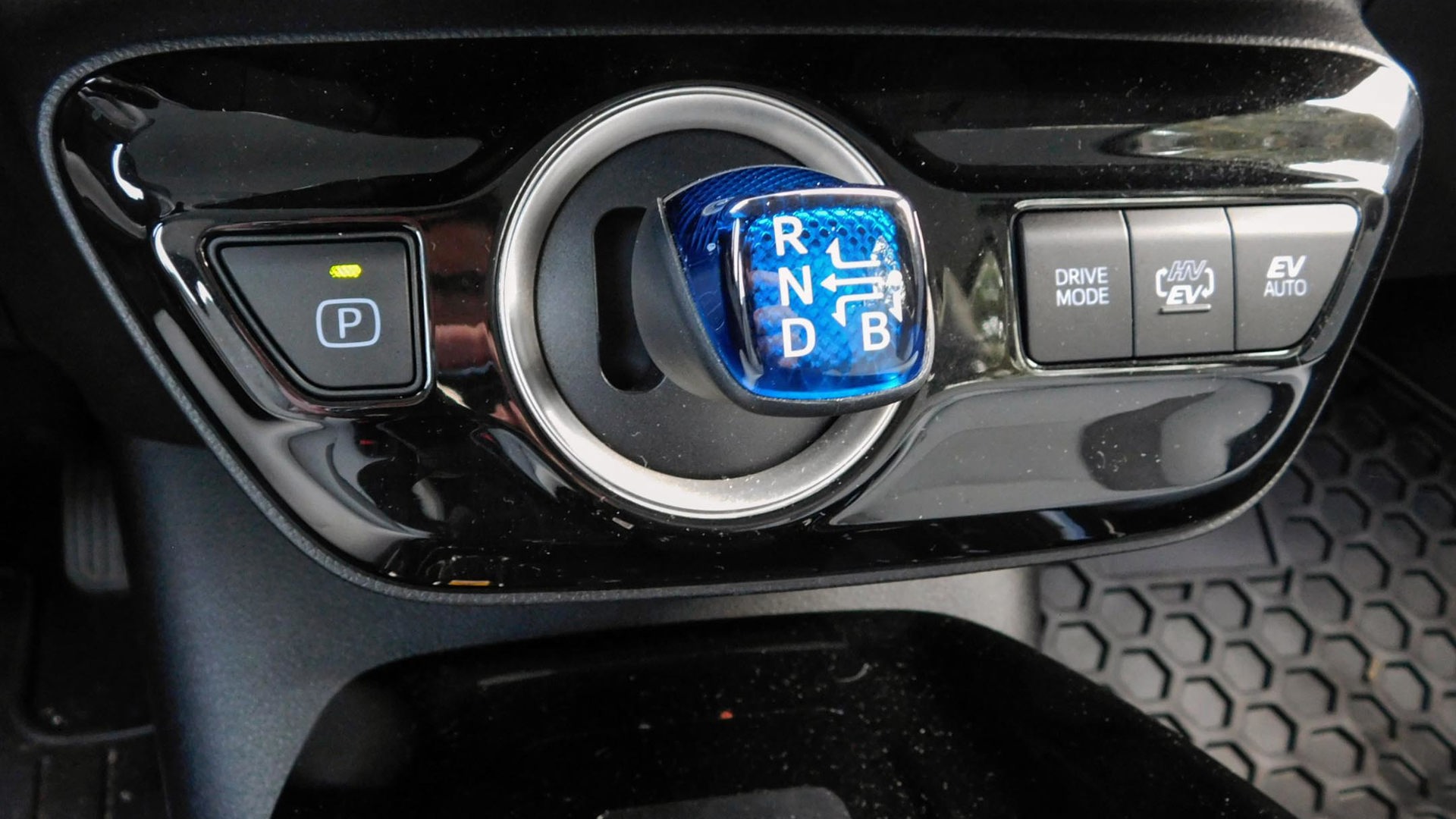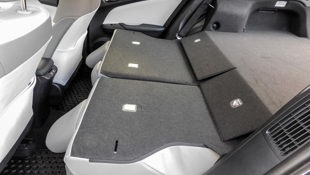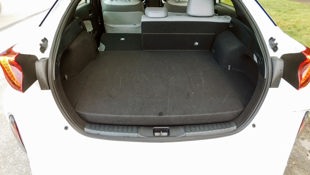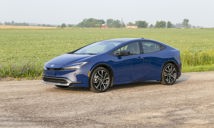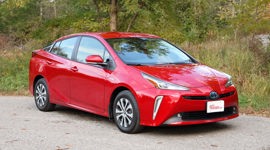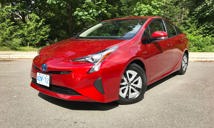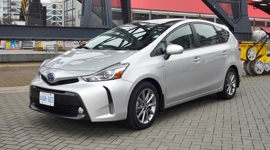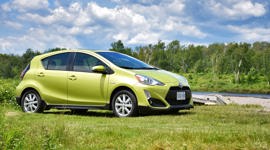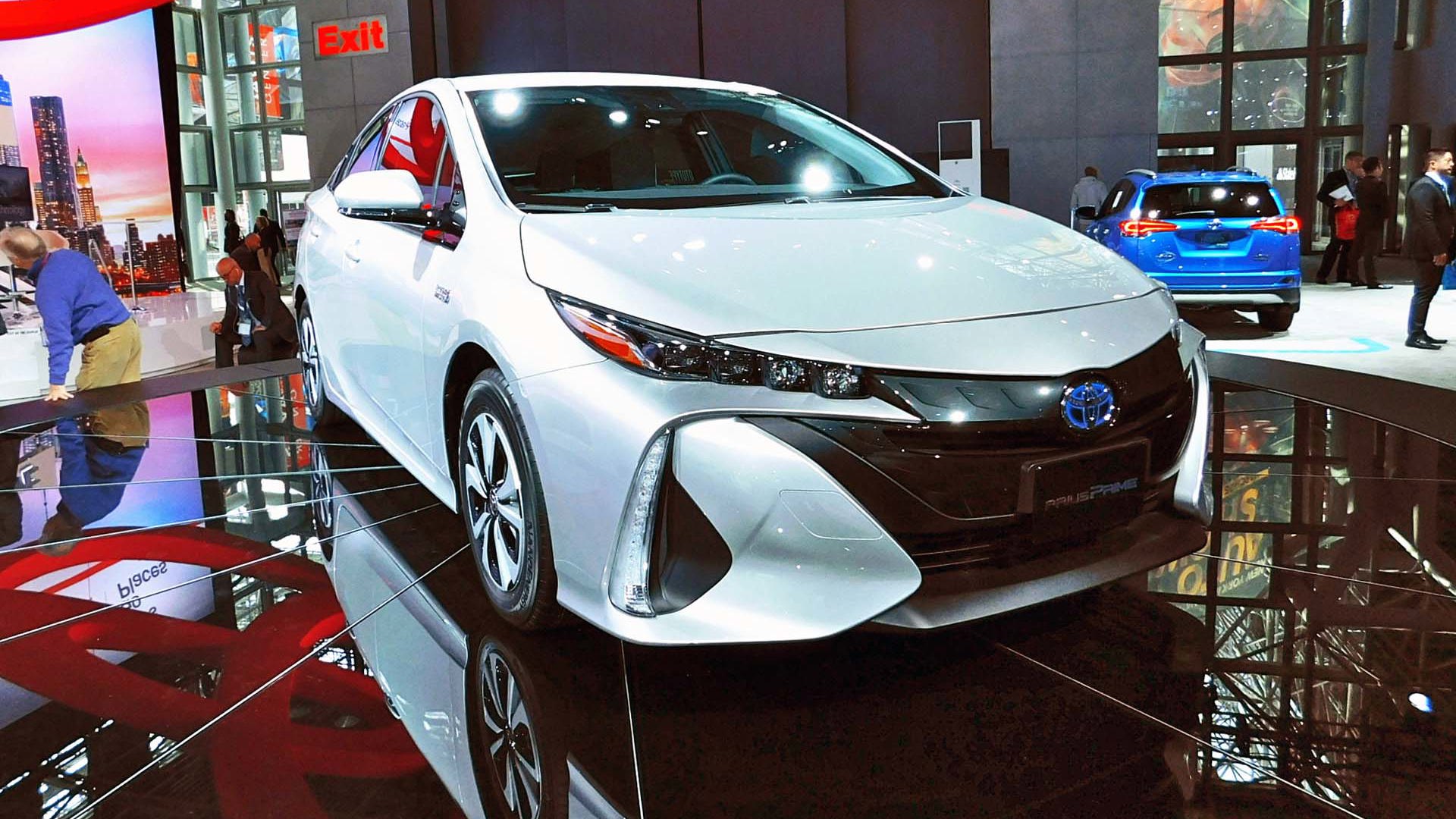 AutoTrader SCORE
AutoTrader SCORE
-
STYLING7/10
-
Safety8/10
-
PRACTICALITY8/10
-
USER-FRIENDLINESS7/10
-
FEATURES6/10
-
POWER7/10
-
COMFORT7/10
-
DRIVING FEEL7/10
-
FUEL ECONOMY9/10
-
VALUE8/10
It’s hard to ignore electric vehicles (EVs) these days, especially if you live in one of Canada’s big cities.
They’re everywhere, it seems, and mainstream manufacturers are promising us more of them in the coming years. But unless your household has two vehicles, Canada’s vast distances and cold climate can make going pure electric a daunting prospect, with range anxiety a real issue. Enter the plug-in hybrid (PHEV), which delivers a taste of all-electric driving with the safety net of internal combustion.
Based on the company’s successful Prius that helped popularize conventional hybrids, the Toyota Prius Prime plug-in was introduced a few years ago. Following the addition of a three-seat rear bench for 2020, changes to the 2021 Toyota Prius Prime are limited to the addition of Apple CarPlay and Android Auto compatibility in the base trim, as well as a 120-volt outlet, and a smart key with push-button start. The Upgrade trim, meanwhile, gets a larger infotainment screen and Apple CarPlay compatibility but no Android Auto, as well as blind-spot monitoring with rear cross-traffic alert.
Power: 7/10
Power for the Prius Prime comes from a combination of a 1.8L four-cylinder gas engine that runs on the efficient Atkinson cycle and makes 95 hp and 105 lb-ft of torque, and an electric motor that boosts the net system output to 121 hp. Power goes to the front wheels via an automatic continuously variable transmission (CVT). Where the regular Prius gets a nickel–metal-hydride battery, the Prime gets a bigger 8.8-kWh lithium-ion unit.
While it’s not a quick car by any stretch, the Prius Prime can keep up with traffic just fine, and its torquey electrically assisted response off the line makes it decently peppy when hopping between traffic lights around town. In hybrid mode it’ll accelerate from zero to 100 km/h in about 11 seconds, while the run takes a couple seconds longer in EV mode.
Powertrain noise varies depending on driving mode and style. In hybrid mode, the gas engine kicks on and off almost imperceptibly provided you’re driving the car gently, but it can drone mightily when accelerating hard or climbing steep highway passes. In EV mode, the Prime can reach speeds as fast as 135 km/h, and is as whisper-quiet as you’d expect of an electric vehicle.
Fuel Economy: 9/10
Official fuel efficiency numbers for the Prius Prime show it using 1.8 Le/100km in EV mode, and 4.3/4.4/4.3 L/100km (city/highway/combined) in hybrid mode. Claimed range is 40 km of all-electric driving on a fully charged battery, followed by the gas engine kicking in for the car to operate like a conventional hybrid.
When I picked up my test car it was showing a long-term average of 4.7 L/100km over 2,000 km. During my week with it, I spent three days on a field trip that offered no plug-in opportunities (and included a highway trek back and forth over a mountain pass), followed by four days trundling around the city and plugging in at home. Running in hybrid mode I racked up a total of exactly 400 km and averaged 5.6 L/100 km. It doesn’t quite measure up to the rated efficiency, but it still represents very good fuel economy.
In EV mode, with cold temperatures prompting me to crank on the cabin heat and seat heaters, I was unable to get more than about 28 km on a single charge. An acquaintance who owns a 2020 Prius Prime berated me for this poor showing, noting that he regularly manages 40 km of electric driving in winter and can exceed 40 km in the summer – a result that suggests one’s driving style, and the temperature outside, have huge influences on EV range.
Charging time is about 5.5 hours on a regular 120-volt household outlet (and less than half that using a 240-volt outlet), so provided you can plug in at work you could theoretically commute as far as 40 km each way to and from work without ever needing to use the gasoline engine. Something I noted was that unlike in the past, I was thwarted in my efforts to get free electric charging while out shopping because the free electric-vehicle charge stations were all fully occupied. As electric vehicles proliferate, the benefits afforded to early adopters are likely to dwindle (I ended up dragging an extension out through my front door letter slot and paying for my own electricity).
Styling: 7/10
Unique headlights, taillights, and front fascia – including a spindle-shaped grille that appears as though it might have been borrowed from Lexus – give the Prius Prime a distinctive (and slightly more upscale) look compared to the garden-variety Prius hybrid. The Prime is still unmistakably a Prius, however, with the same slippery aero profile and collection of slightly odd character lines. Like it or loathe it, it speaks the green language of fuel efficiency.
The Prius Prime makes an equally strong style statement on the inside. It retains much of the Prius’s long-standing minimalist aesthetic, with a central instrument pod and floating centre stack, but thanks to improvements in material quality and stylistic detailing the overall effect has been elevated from cold and drab to airy and futuristic.
Comfort: 7/10
The Prius Prime offers decent space inside. There’s headroom to spare up front, and the front seats in my Upgrade trim car were nicely supportive. Back-seat passengers get plenty of legroom, and while the swoopy roofline means rear headroom is less generous, it’s still enough for the average adult.
Toyota claims that its faux leather (as equipped in the Upgrade trim) is breathable, but in practice I don’t find it near as breathable as genuine leather. It tended to leave me feeling a little sticky after a couple of hours at the wheel, and I’d prefer a different material, whether that’s genuine leather, faux suede, or fabric.
Practicality: 8/10
With seating for five and plenty of rear legroom, the Prius Prime is a thoroughly practical around-town runabout that can also handle long highway trips in comfort. Thanks to its 1,035-km combined electric/gas driving range, you’ll need to stop to take care of passenger needs long before the car needs to stop for fuel.
The Prime’s larger battery compared to the regular Prius does take up a little cargo space, so where the Prius offers 697 L of cargo space, and has a flat cargo floor with the rear-seats folded, the Prius Prime has 561 L of space and a bump in the cargo floor when the seats are folded. From a purely practical point of view, I found the main drawback is that the space under the cargo cover is quite shallow – you can’t stow carry-on bags on their sides (as space efficiency would dictate) and still hide them from view.
Features: 6/10
The Prius Prime comes with a comprehensive range of standard and available features, but falls short in terms of how the features are bundled. Standard equipment includes automatic climate control, smart key with push-button start, heated front seats, heated steering wheel, six-speaker audio with satellite radio, Bluetooth connectivity, Apple CarPlay and Android Auto connectivity, and plenty more.
My test car was the prosaically named Upgrade trim, which bumps the MSRP up to $36,350 (from the base car’s $33,550) and adds features including blind-spot monitoring with rear cross-traffic alert, wireless phone charging, touch-sensitive locks on the passenger’s door and rear hatch, an enormous 11.6-inch Tesla-esque vertical touchscreen with embedded navigation (the standard screen is a more modest seven inches), faux leather upholstery (replacing fabric), and a power-adjustable driver’s seat.
Most of these upgrades make sense, although the blind-spot monitor should really be part of the base package since it’s a pretty common safety item these days. More problematic is that the Upgrade trim eliminates Android Audio compatibility (leaving just Apple CarPlay) and jettisons the Toyota Safety Connect system – so in those two departments it’s a downgrade. It’s an issue that’ll likely be sorted out for the next model year, but in the meantime it’s an annoyance, especially for Android fans.
The $2,350 Technology package, which was also included on my test car, is only available with the Upgrade trim and adds rain-sensing wipers, a head-up display, foglights, parking sensors, an auto-dimming mirror, and 10-speaker audio system. It’s a pricey but desirable selection of equipment (I especially appreciated the head-up display given the Prius’s lack of a regular instrument binnacle), so it’s frustrating that it’s not available on the base car. After all, you don’t need an 11-inch screen to control a 10-speaker audio system, and the rest of the gear appears to be entirely stand-alone. Overall, the Prius Prime’s features would rate an easy 8/10 based solely on their own merits, but are dragged down due to the way Toyota bundles them.
User Friendliness: 7/10
For the most part, the Prius Prime is a perfectly easy-to-use appliance. I’ve never been a big fan of the Prius’s odd little gearshift wand – it requires drivers to think differently when switching between cars, and it requires Toyota to add a loud, continuous warning beeper inside the cabin to alert you whenever you’re in reverse (I read on a forum that you can have the dealer reprogram this to be just a single long beep when you initially engage reverse, which would be a huge improvement).
The big touchscreen in the Upgrade trim eliminates a bunch of hardware controls (the climate controls for instance), migrating them onto the screen instead. For tech-savvy drivers this may be appealing, while others might find it bothersome to have to fiddle around with the screen in order to adjust the fan – especially if the sun is beaming directly onto the screen and making it hard to read.
Toyota has tidied up the infotainment interface a bit compared to other Toyota’s I’ve driven recently, and in general I found it reasonably intuitive to use, with well thought-out menus and handy shortcuts.
Driving Feel: 7/10
The Prius Prime shares a platform with most of this automaker’s cars and features an independent multi-link rear suspension, and so it drives much like any mainstream Toyota. It tracks well and corners crisply, but while it’s definitely more engaging than the first-gen Prius it’s also not what you’d call sporty. Comfort and competence are its forte.
My only quibbles were that the ride quality can occasionally be a bit brittle over sharp city bumps, and that the regenerative brakes felt a touch non-linear at times. Mostly, however, this Prius is pleasant and accommodating to drive.
Safety: 8/10
The Prius Prime scores well on the safety front, with a solid structure and a comprehensive collection of active safety technology included as standard equipment. The Prime achieves “Good” scores in most Insurance Institute for Highway Safety (IIHS) crash rating categories, with only the passenger-side small overlap test scoring a mere “Acceptable.”
Toyota’s included Star Safety System has all the basic expected safety tech (ABS, traction control, stability control, smart stop technology, and more). A pair of Safety Sense packages, also included as standard equipment, add adaptive cruise control, lane-departure alert, auto high-beams, pre-collision system with pedestrian/bicycle protection, and lane-keep assist. The one glaring omission here is the blind-spot monitoring system, which is only available in the more expensive Upgrade trim.
Value: 8/10
Suggested pricing for the Prius Prime starts at $33,550 for the base model and tops out at $38,700 for my Upgrade trim test car equipped with the Technology package – and that’s before the $1,770 freight charge is tacked on. That means the benefits of electric-only driving will cost you at least $5,000 more than if you opt for a base Prius hybrid (which starts at $28,850, albeit with less equipment).
But of course that’s not the whole story. The federal government currently offers a $2,500 incentive for purchasers of PHEVs, which the regular Prius hybrid doesn’t qualify for. And jurisdictions such as British Columbia and Quebec sweeten the pot with additional provincial incentives, for a total incentive (at the time of writing) of $4,000 in B.C. and $6,500 in Quebec. And that’s before you account for any intrinsic value you might attach to reducing your personal carbon footprint.
Certainly when measured against its direct competition, the Prius Prime represents excellent value: Honda’s Clarity starts at $46,300, while Kia’s more closely priced Ioniq PHEV starts at $33,749.
The Verdict
Toyota has a long and successful track record building the original Prius, and the car has a loyal following. The Prius Prime offers all of the original Prius’s positive attributes with the added benefit of some electric-only power. Factor in its competitive pricing (sweetened with government purchase incentives), and this makes the Prius Prime a must-see contender if you’re in the market for a passenger-car PHEV.
| Engine Displacement | 1.8L |
|---|---|
| Engine Cylinders | I4 Hybrid |
| Peak Horsepower | 121 net hp |
| Peak Torque | n/a |
| Fuel Economy | 4.3 / 4.4 / 4.3 L/100 km cty/hwy/cmb; 1.8 Le/100 km cmb EV mode |
| Cargo Space | 561 L |
| Model Tested | 2021 Toyota Prius Prime Upgrade w/Technology Package |
| Base Price | $36,350 |
| A/C Tax | $100 |
| Destination Fee | $1,770 |
| Price as Tested | $40,570 |
|
Optional Equipment
$36,350
$2,350 – Technology Package, $2,350
|
|
